Dominica
Roseau > Mero Beach > Portsmouth
December 2016

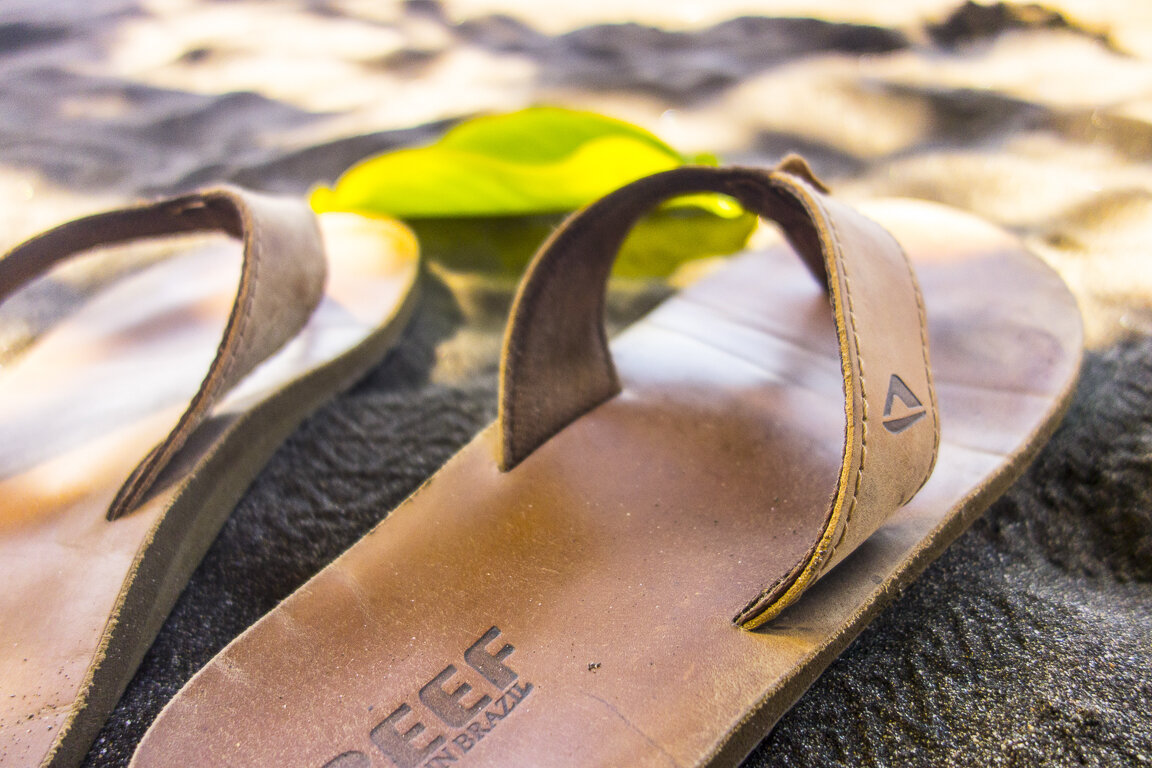
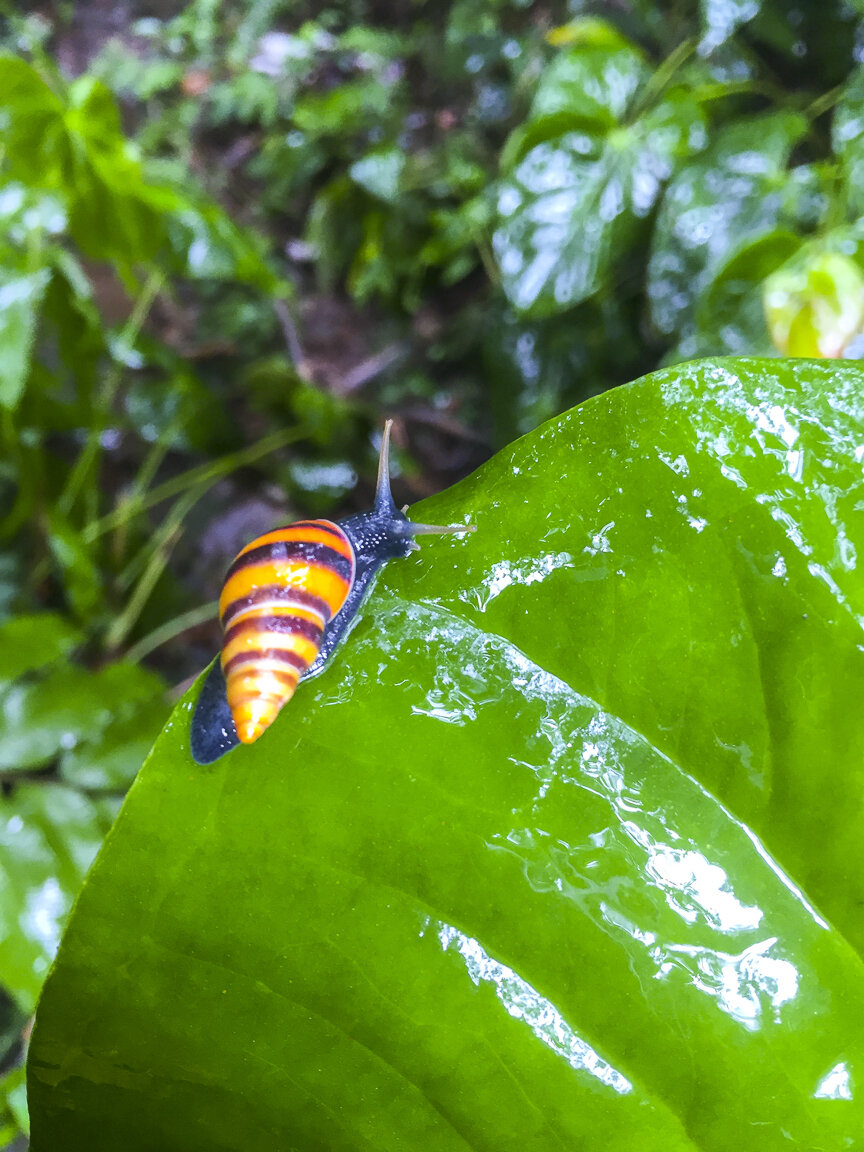
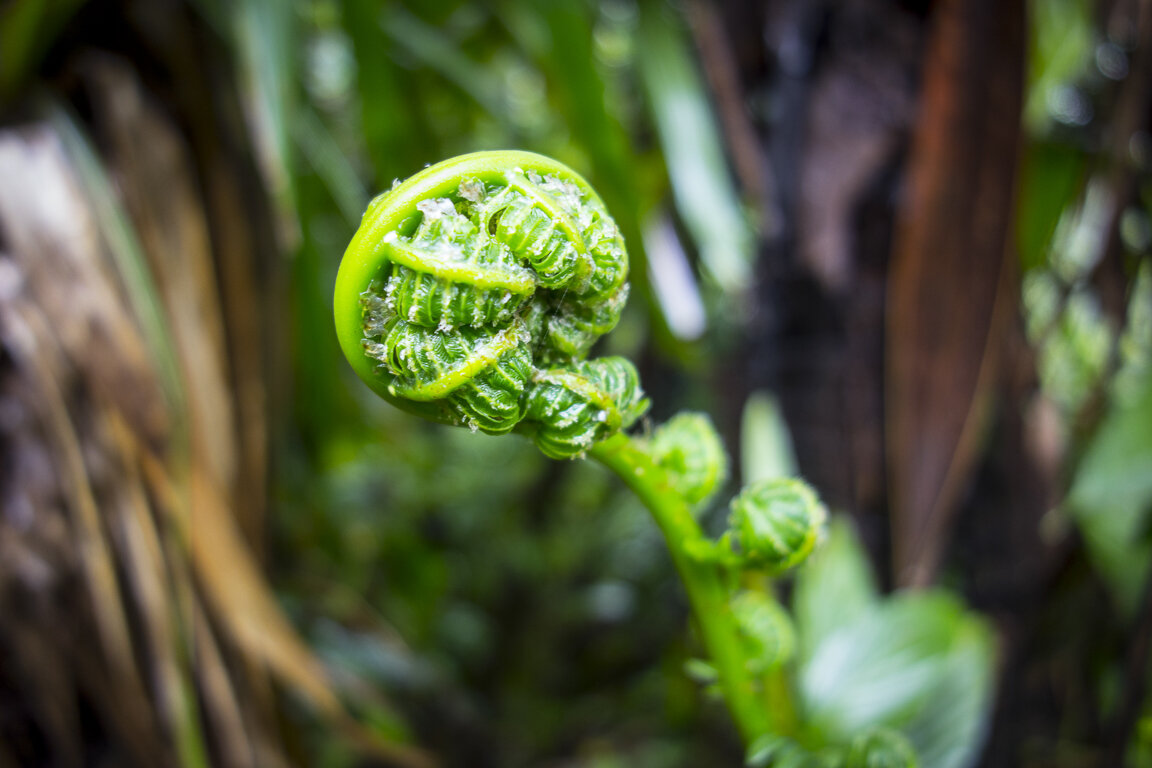
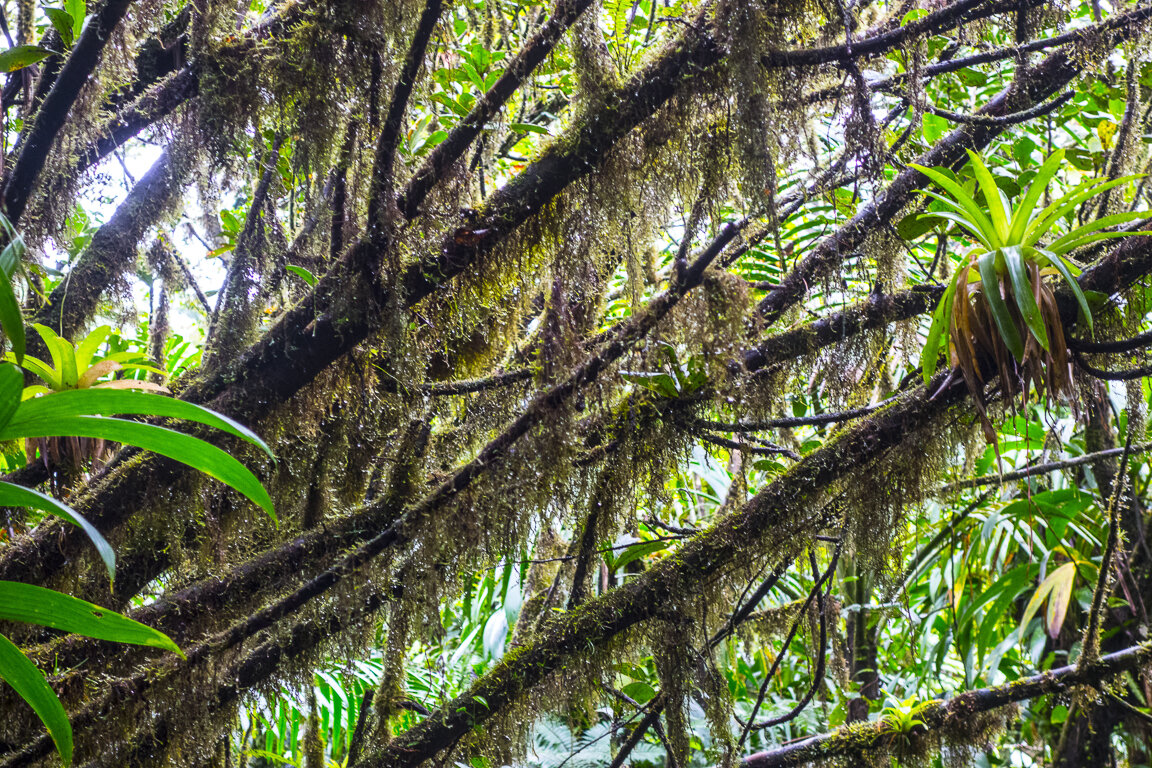

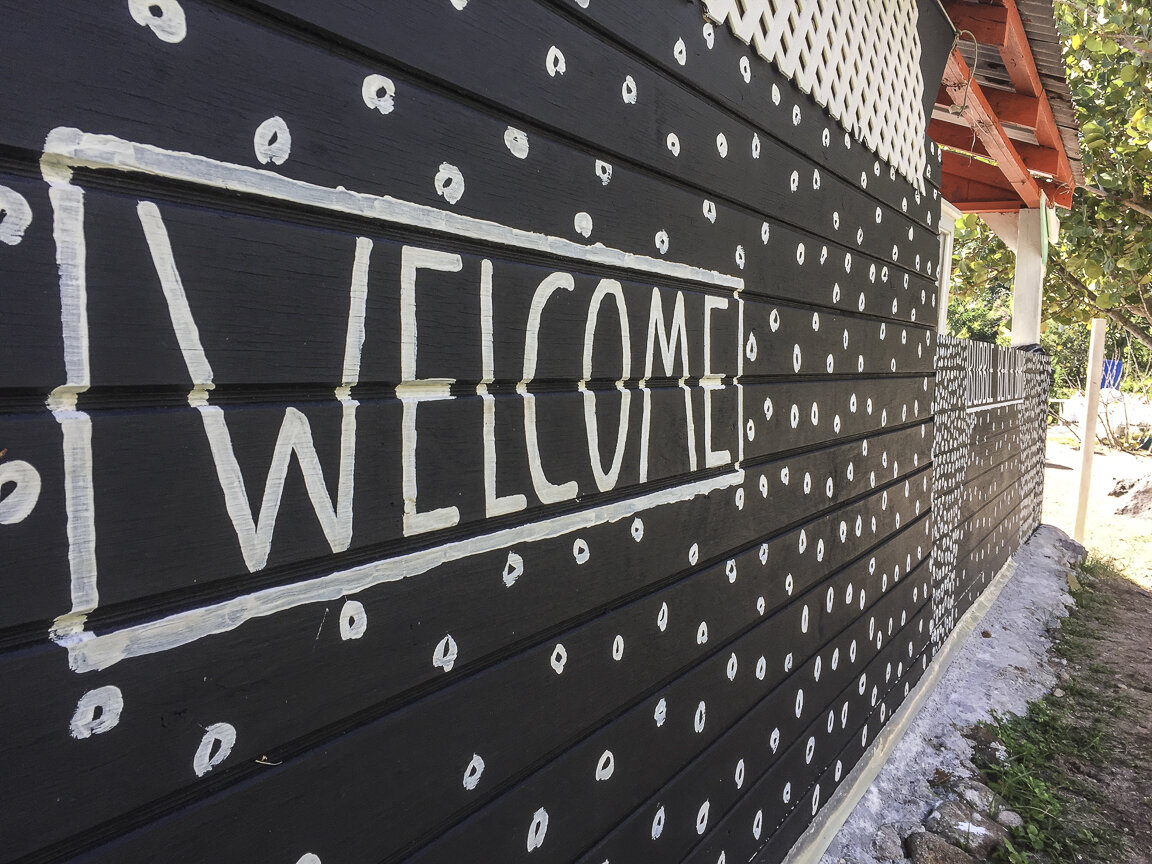
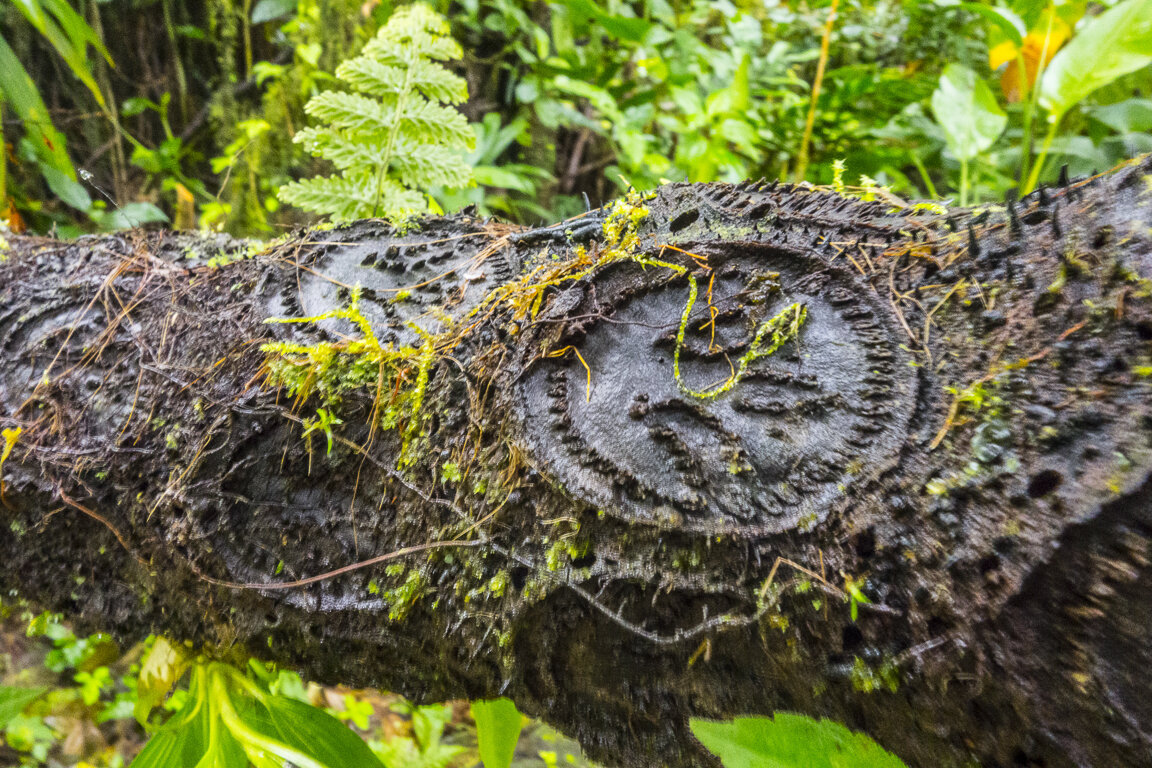
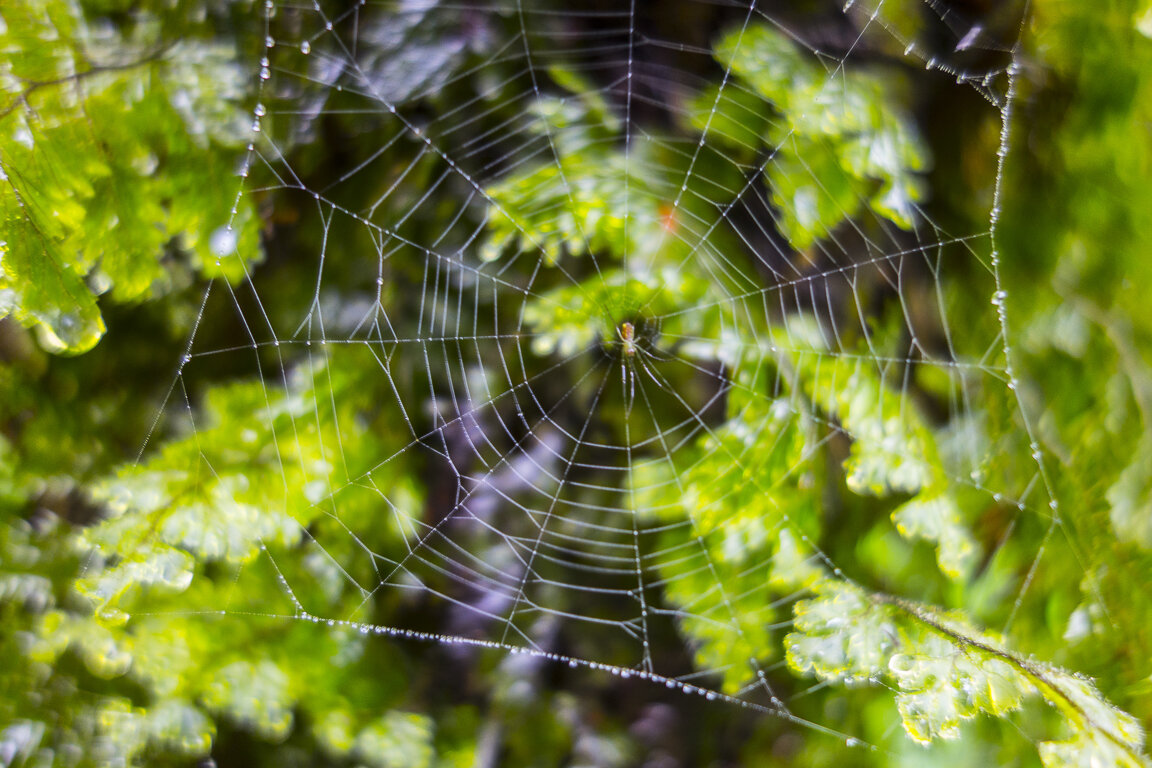

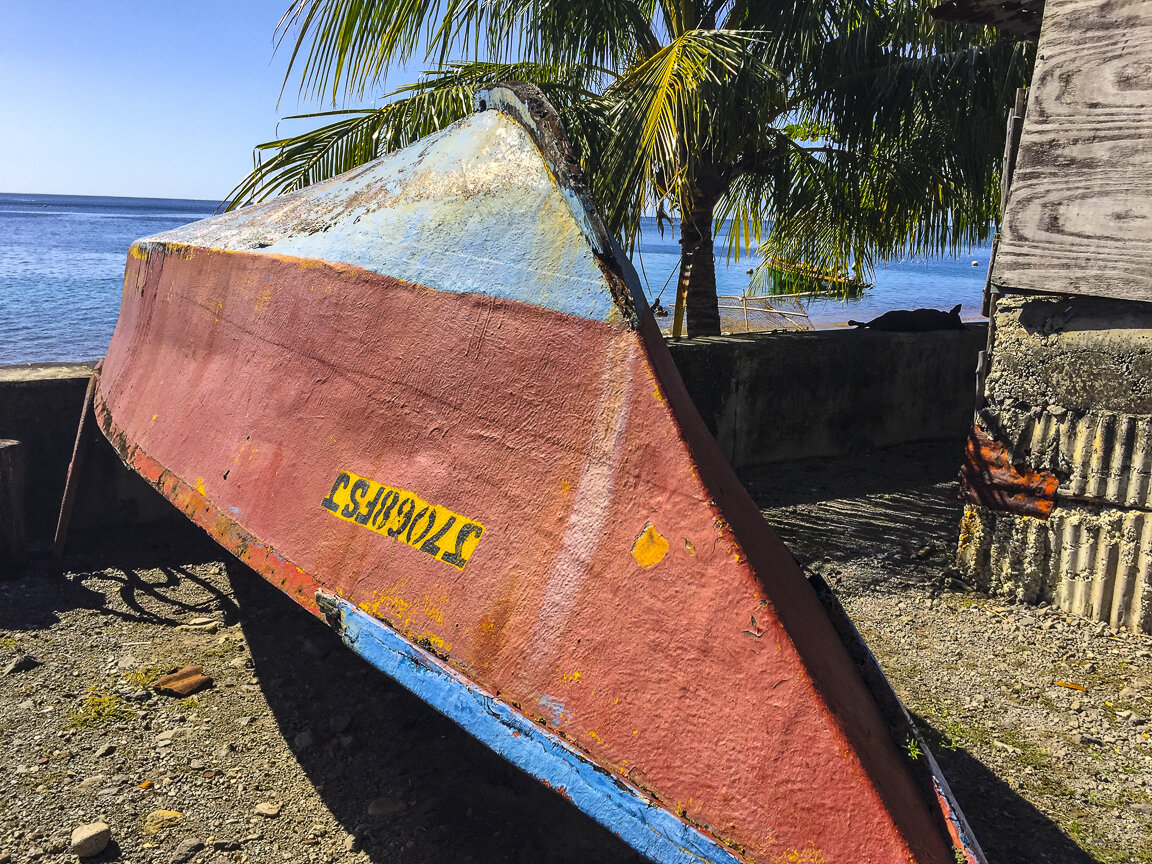
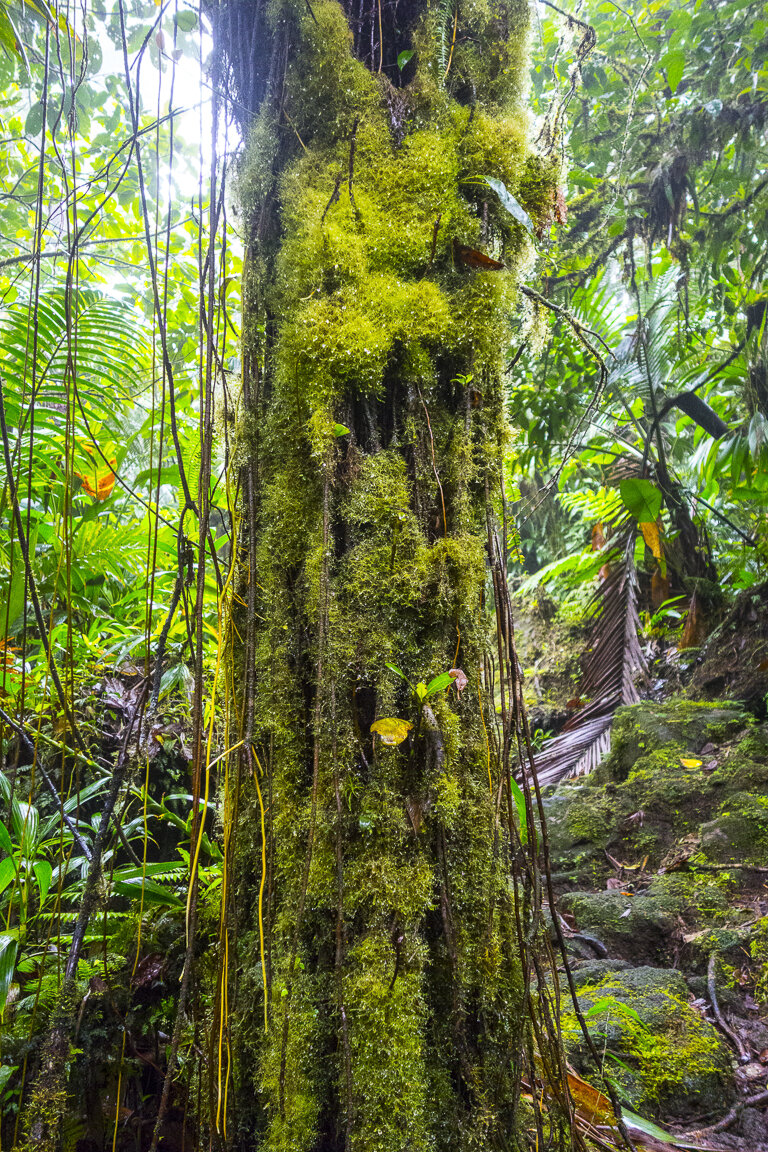
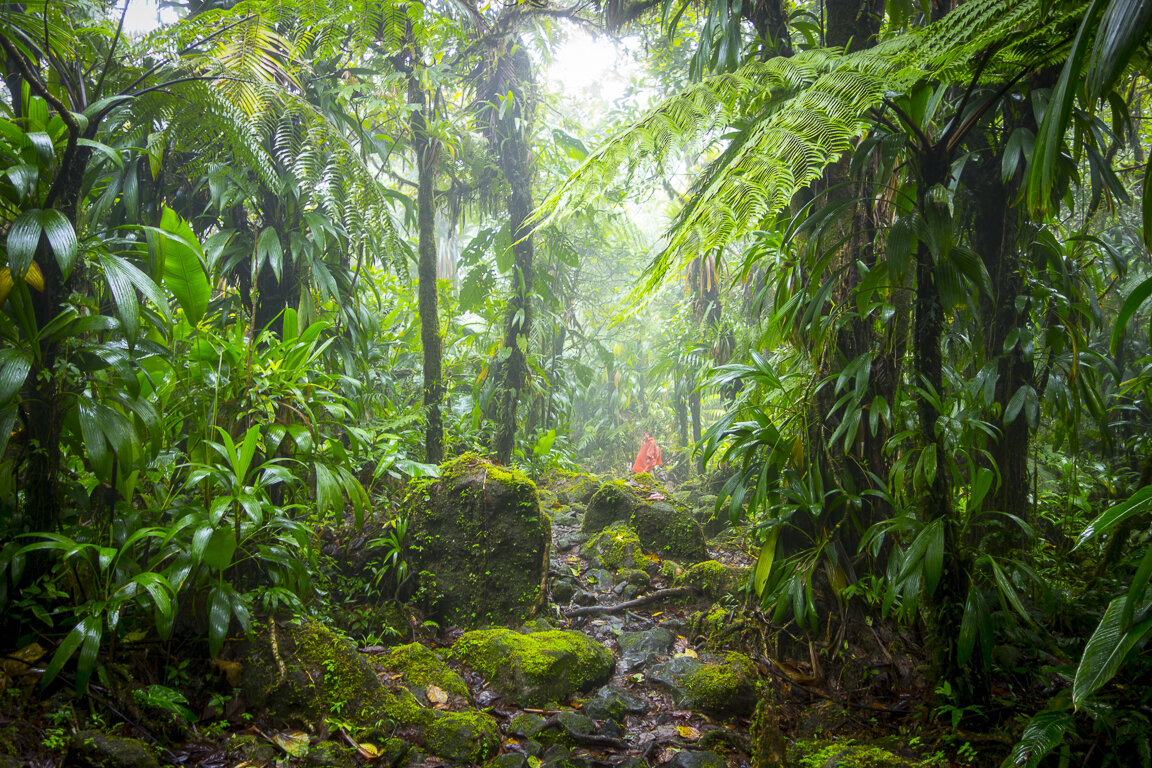
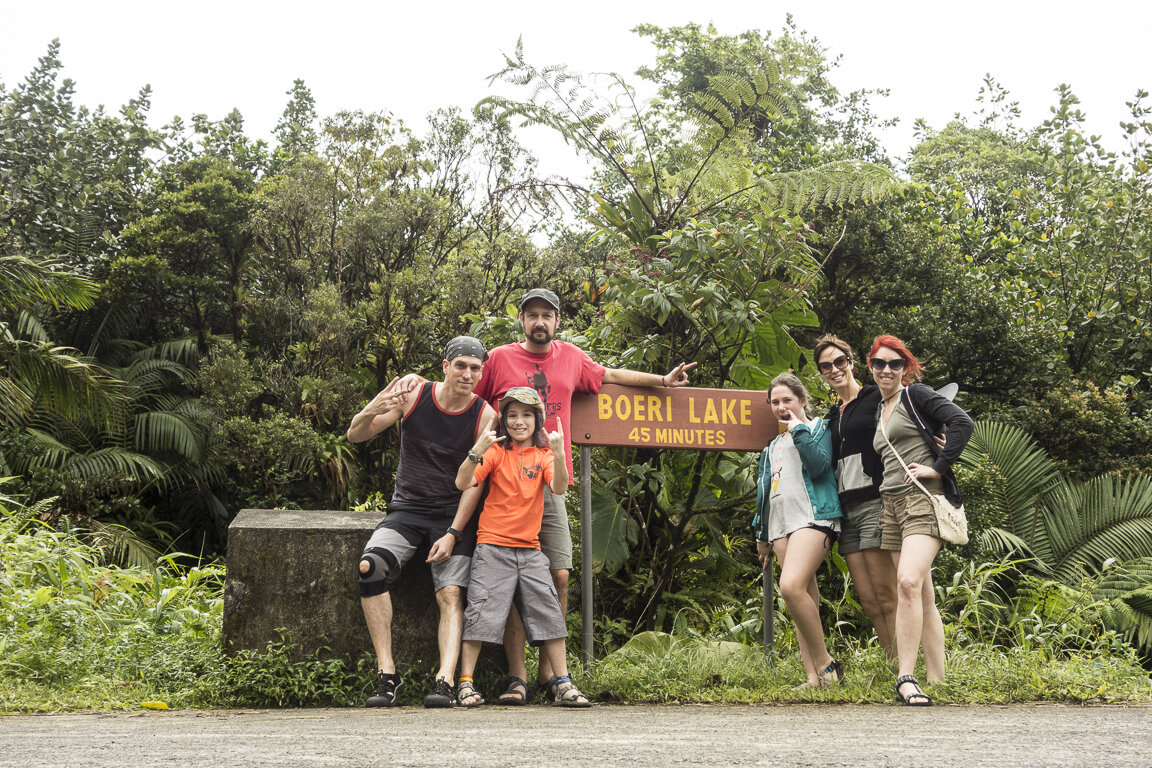
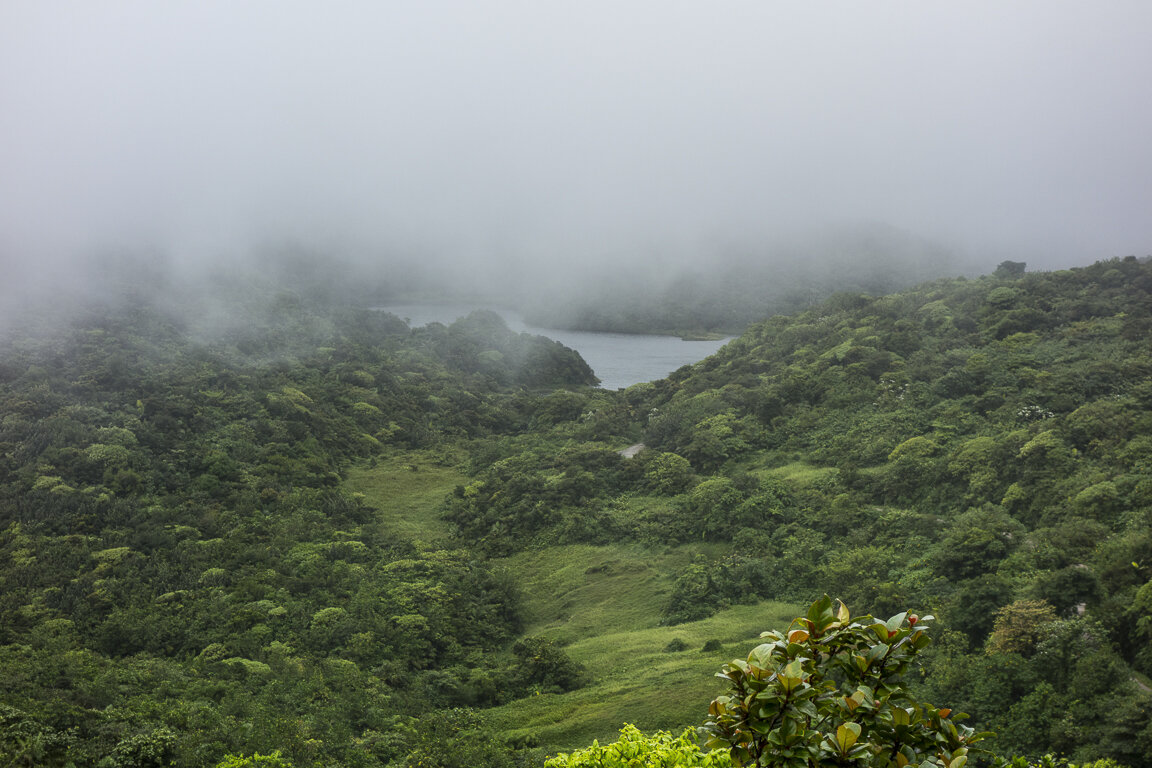

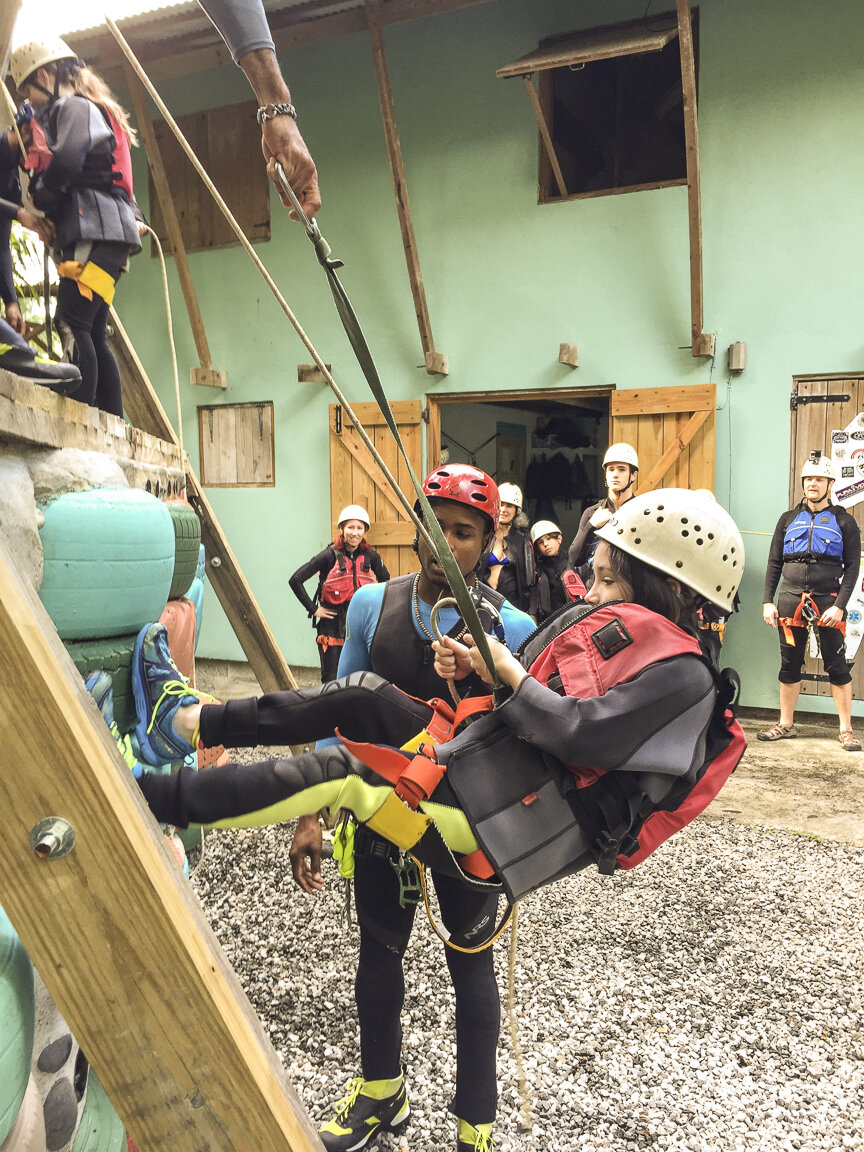


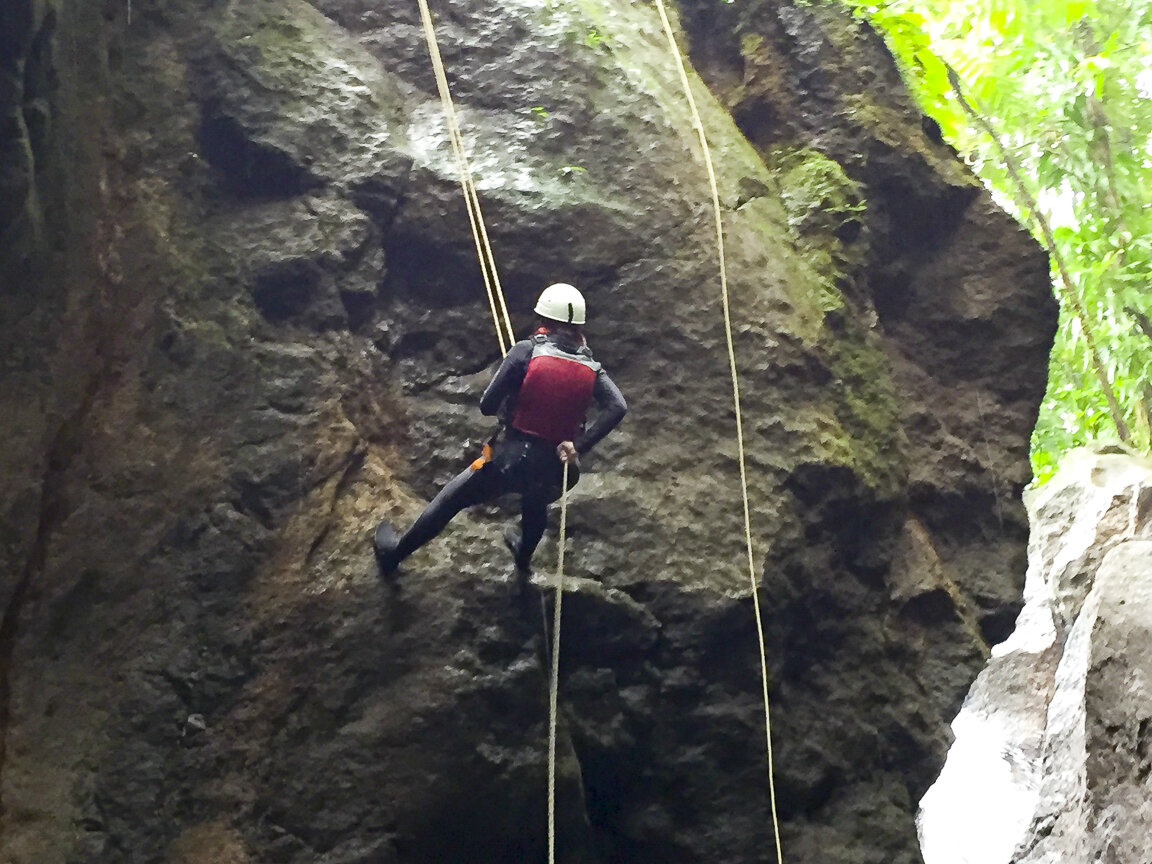
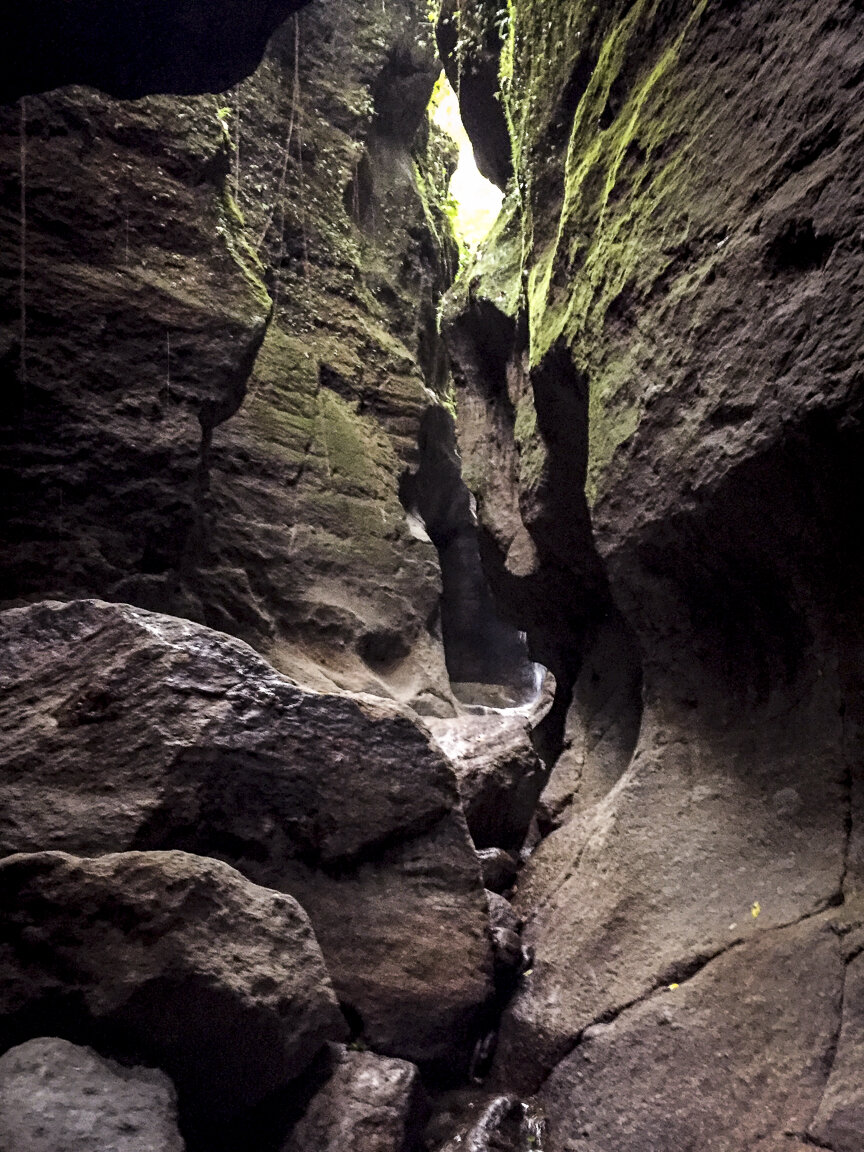
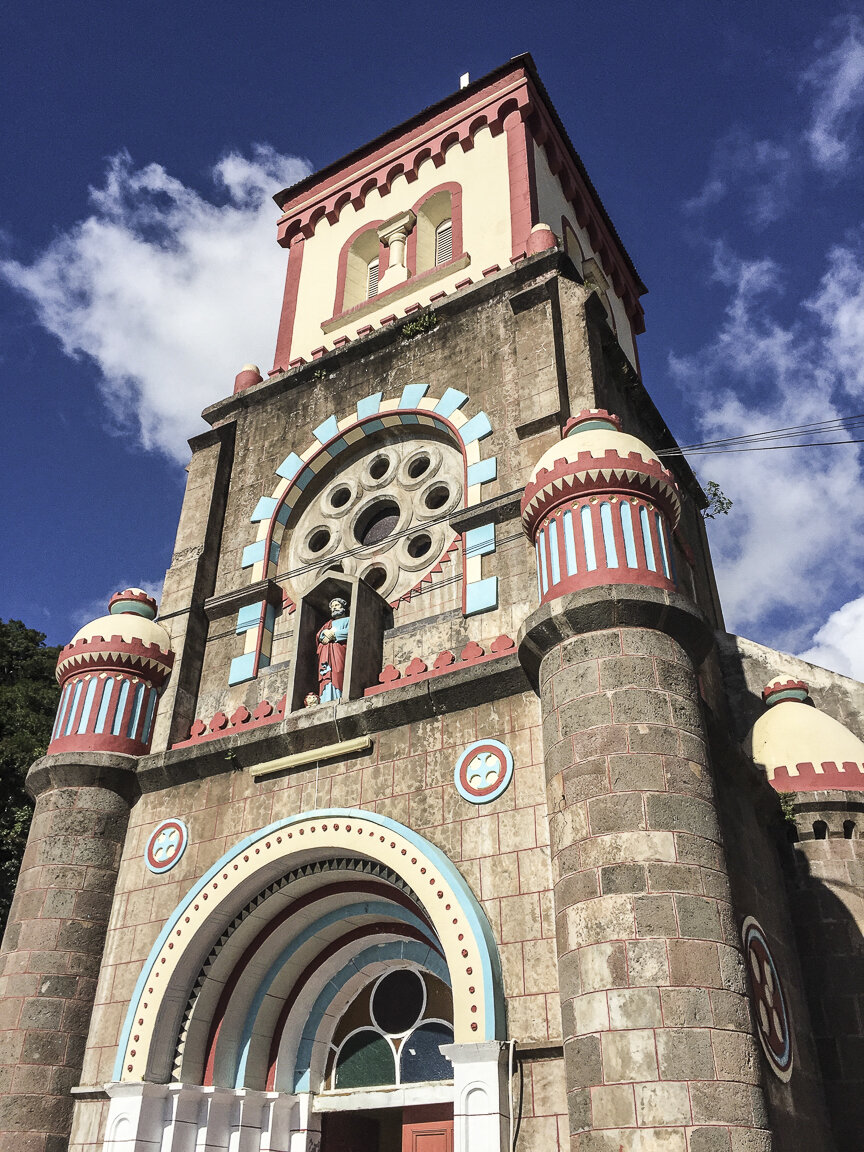
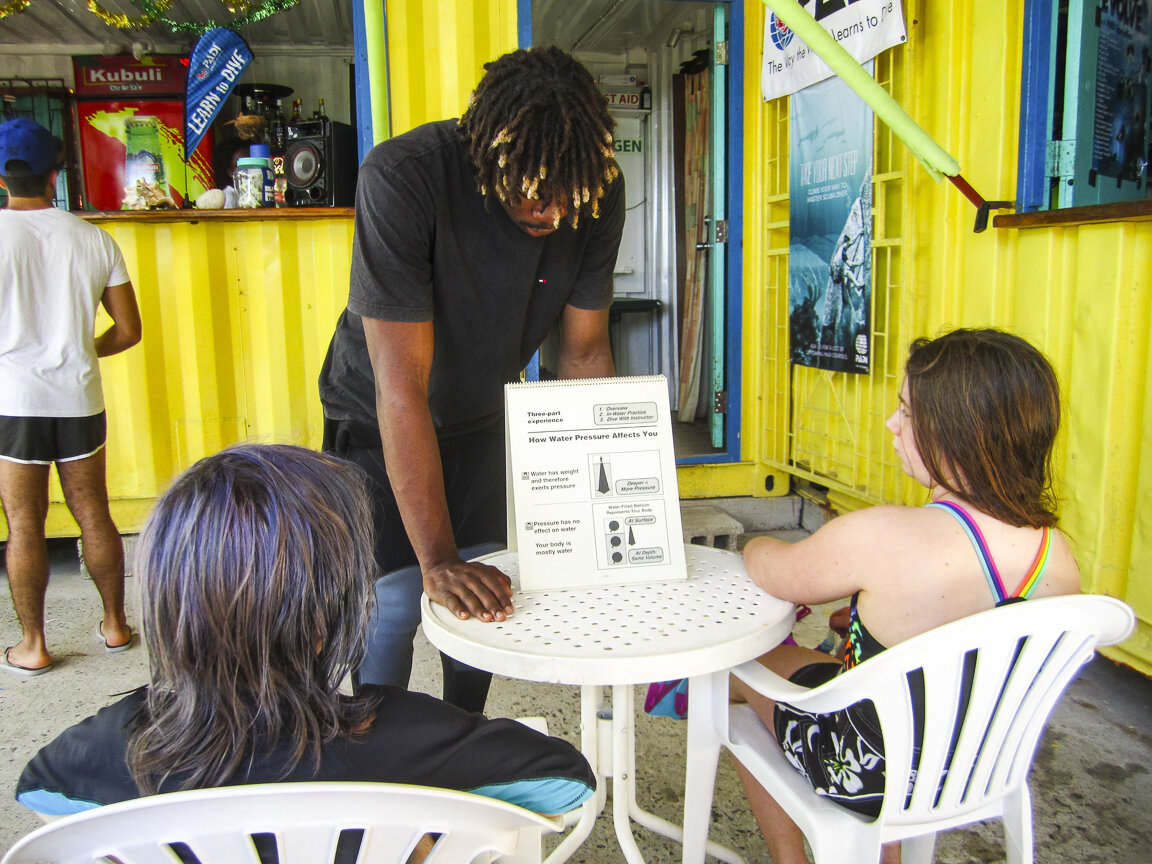
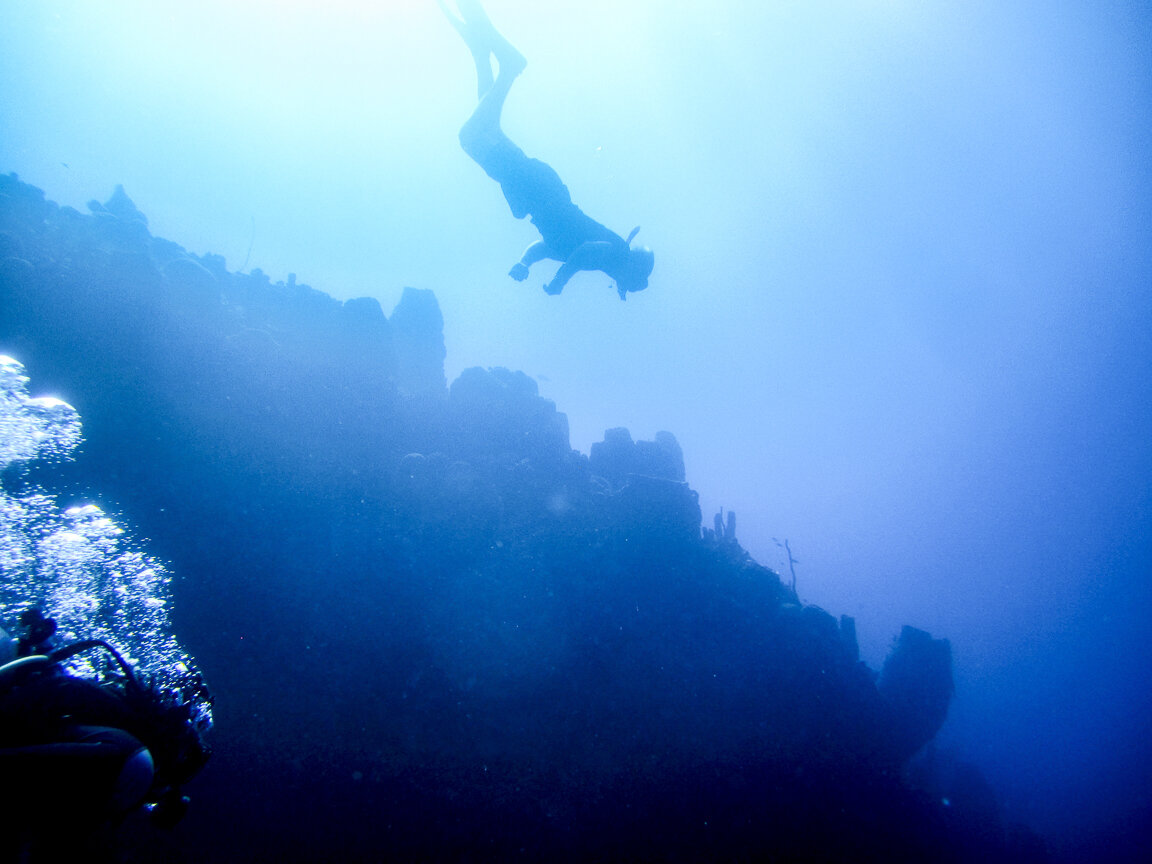
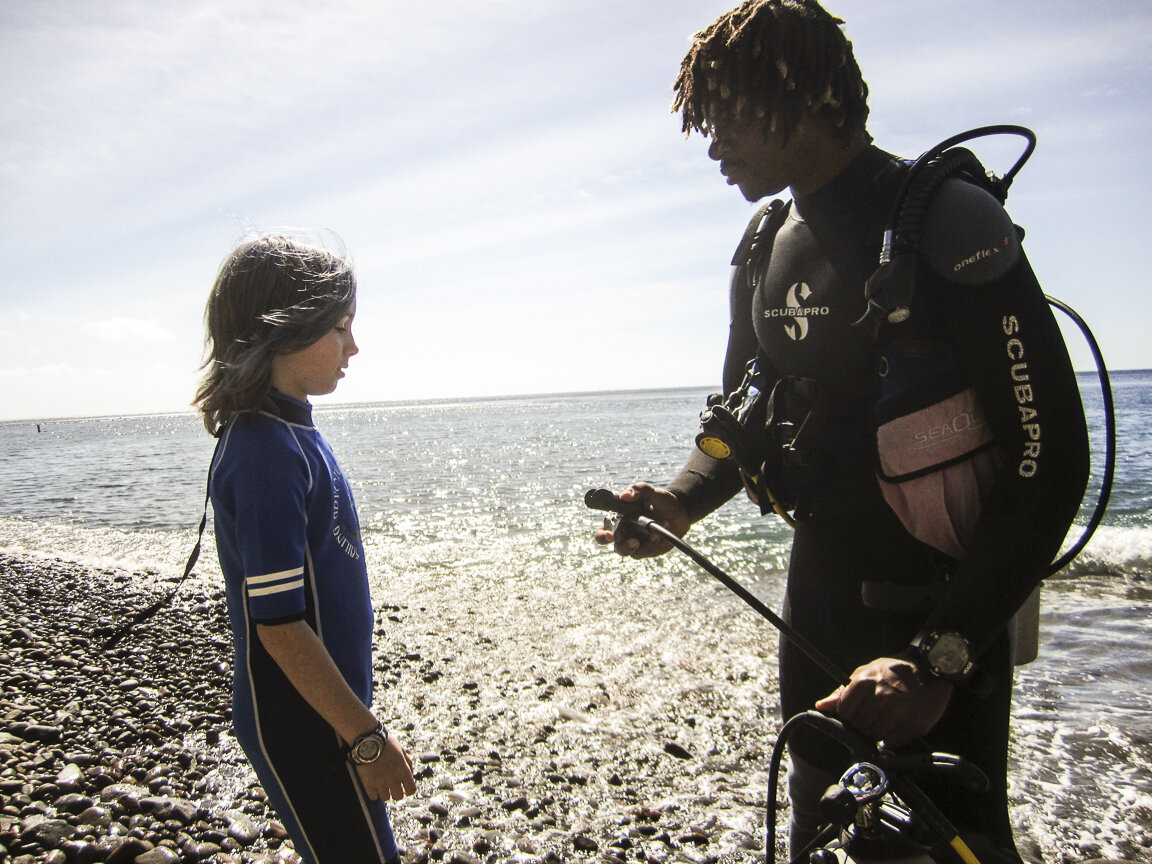

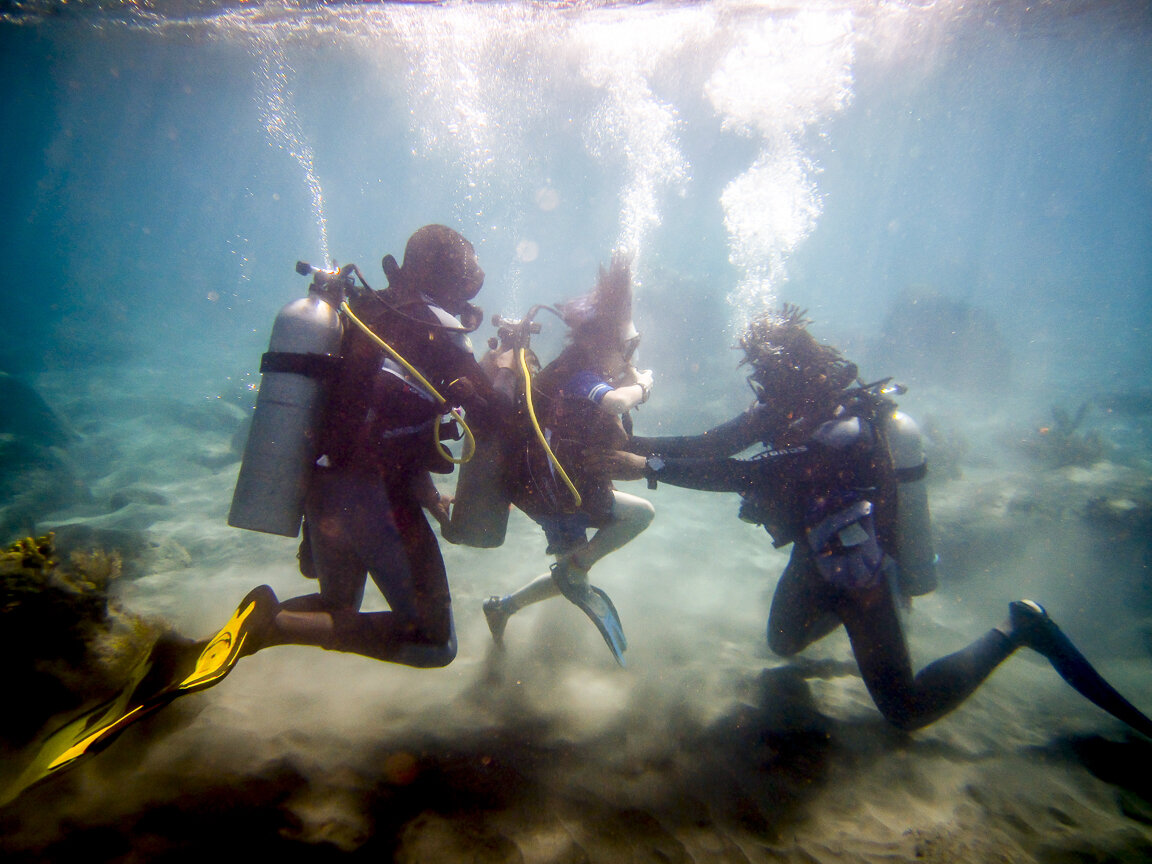

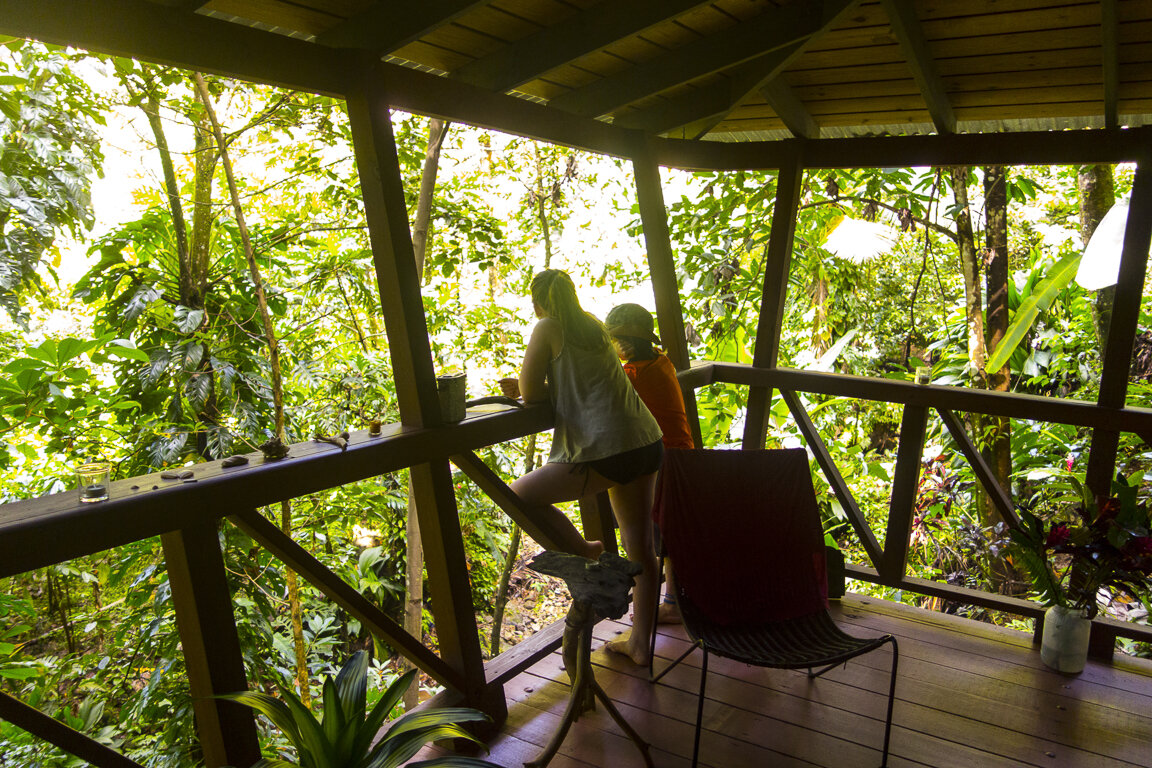
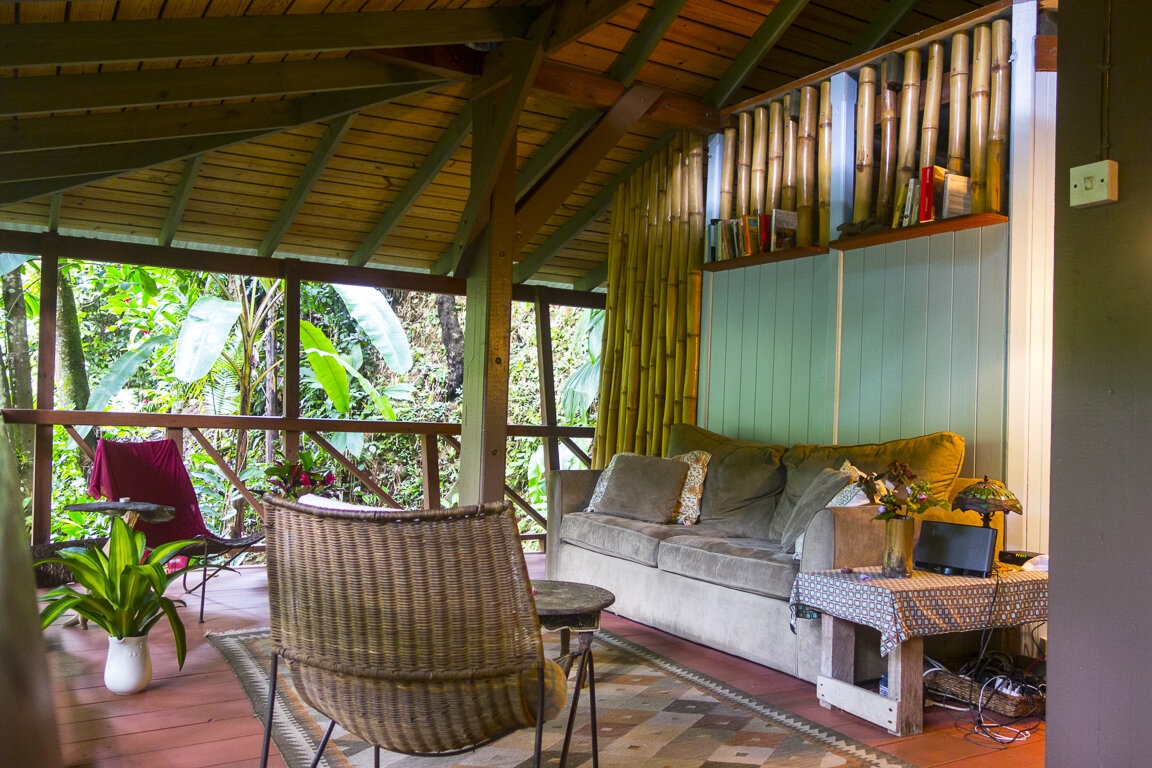


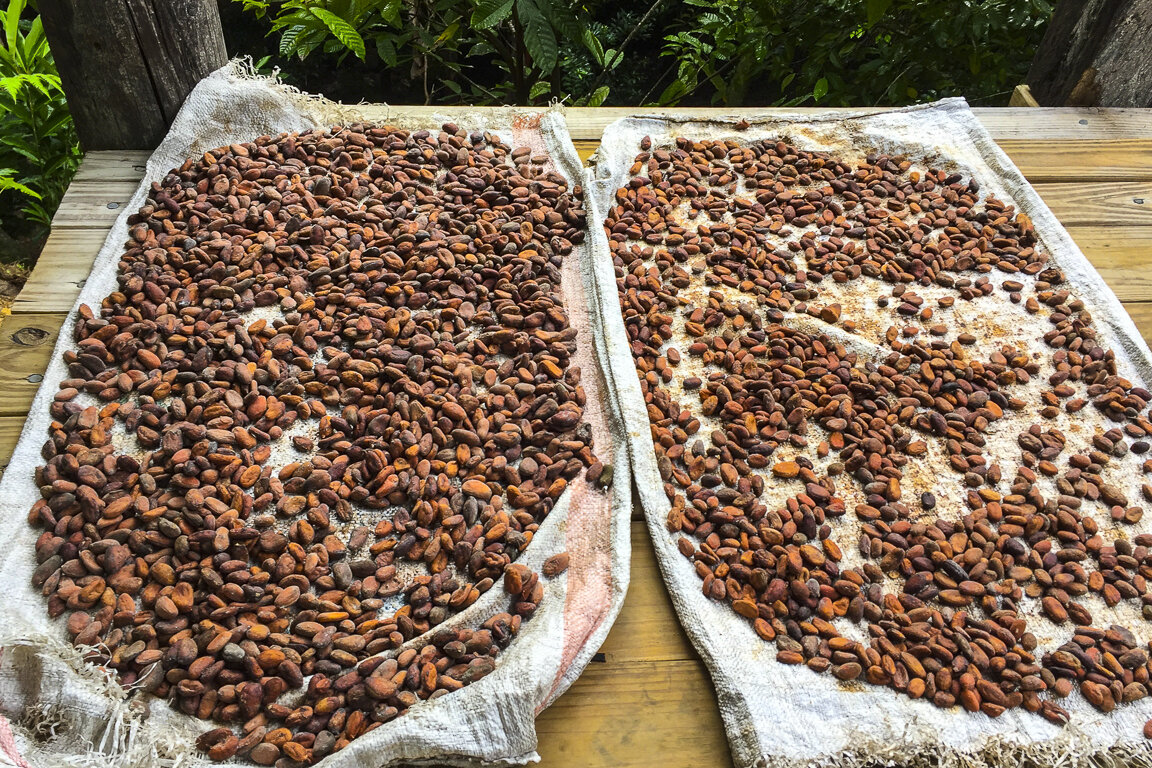
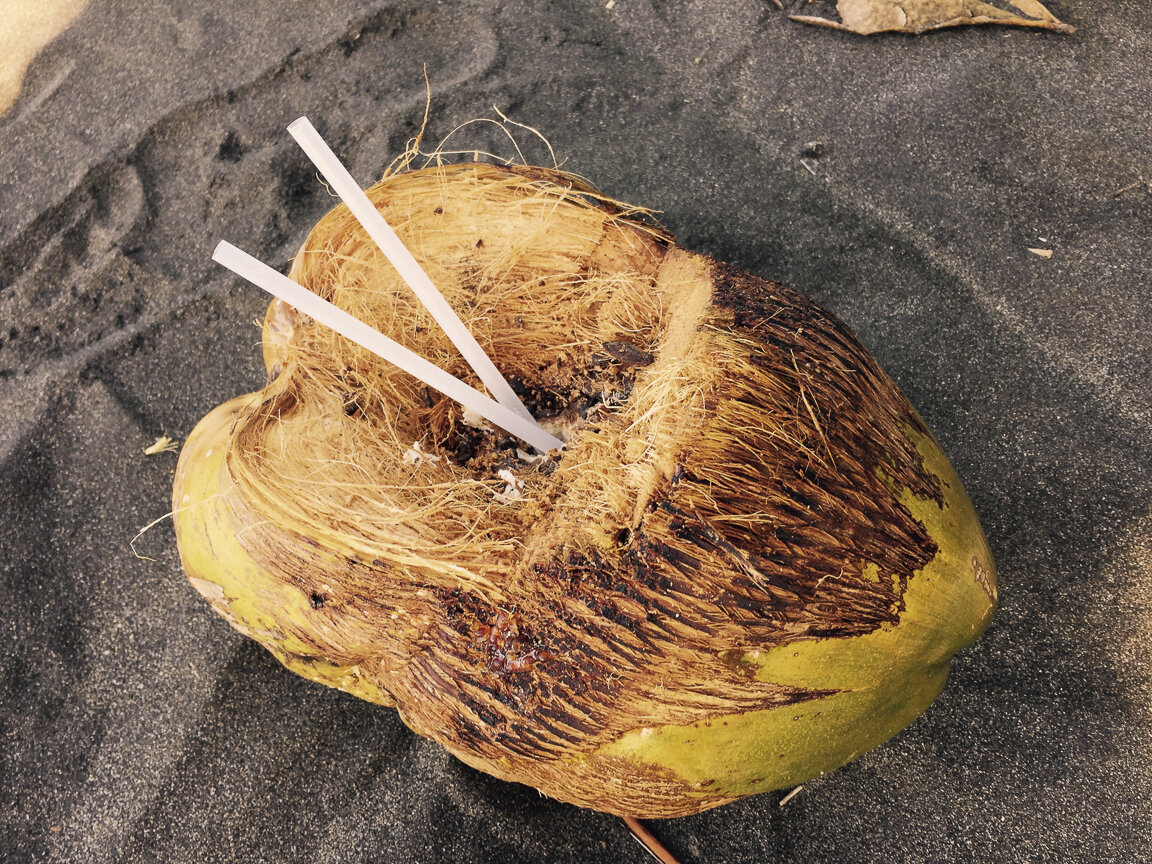

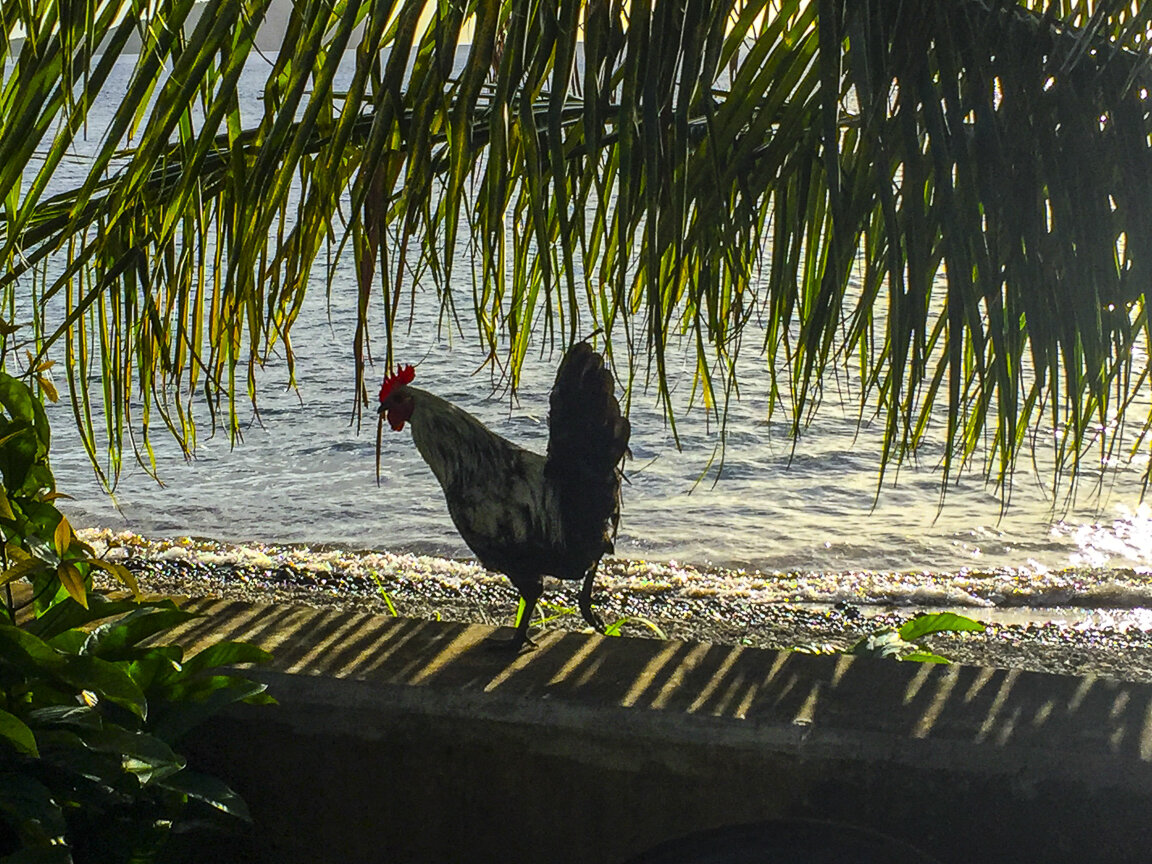
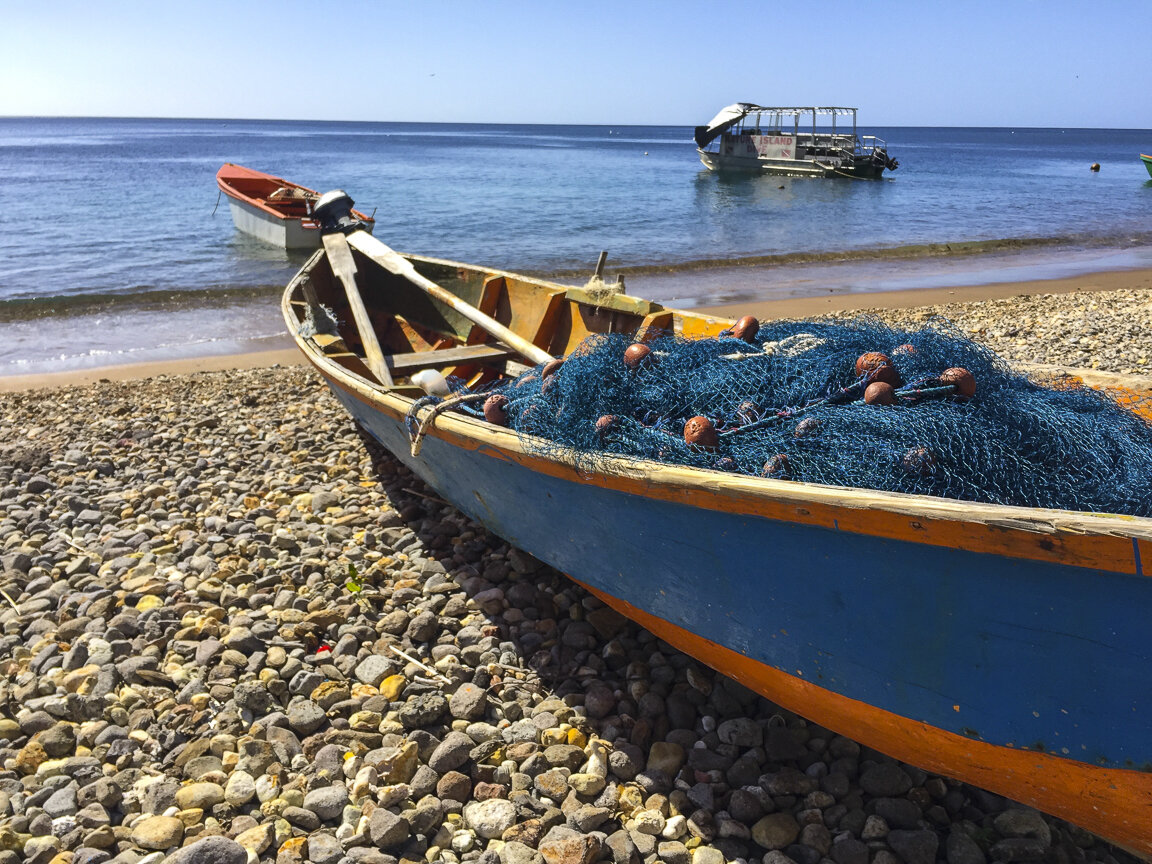
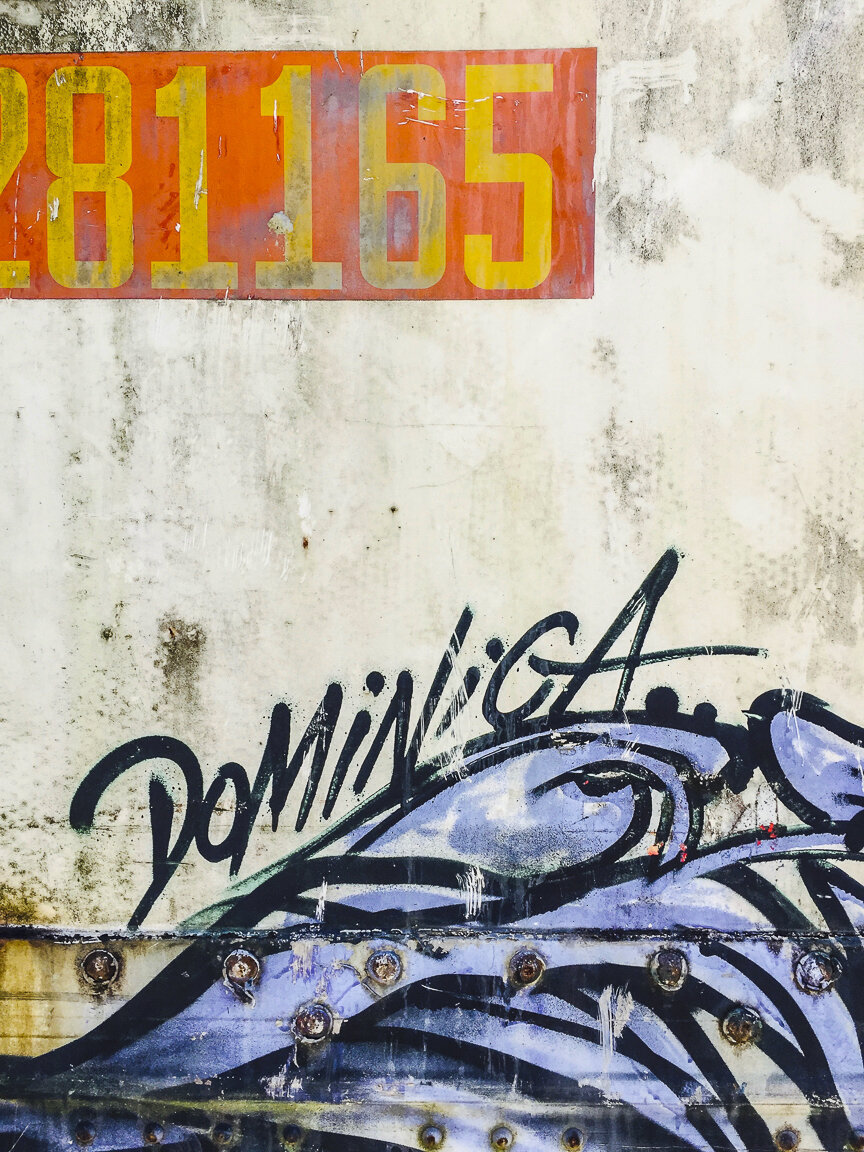
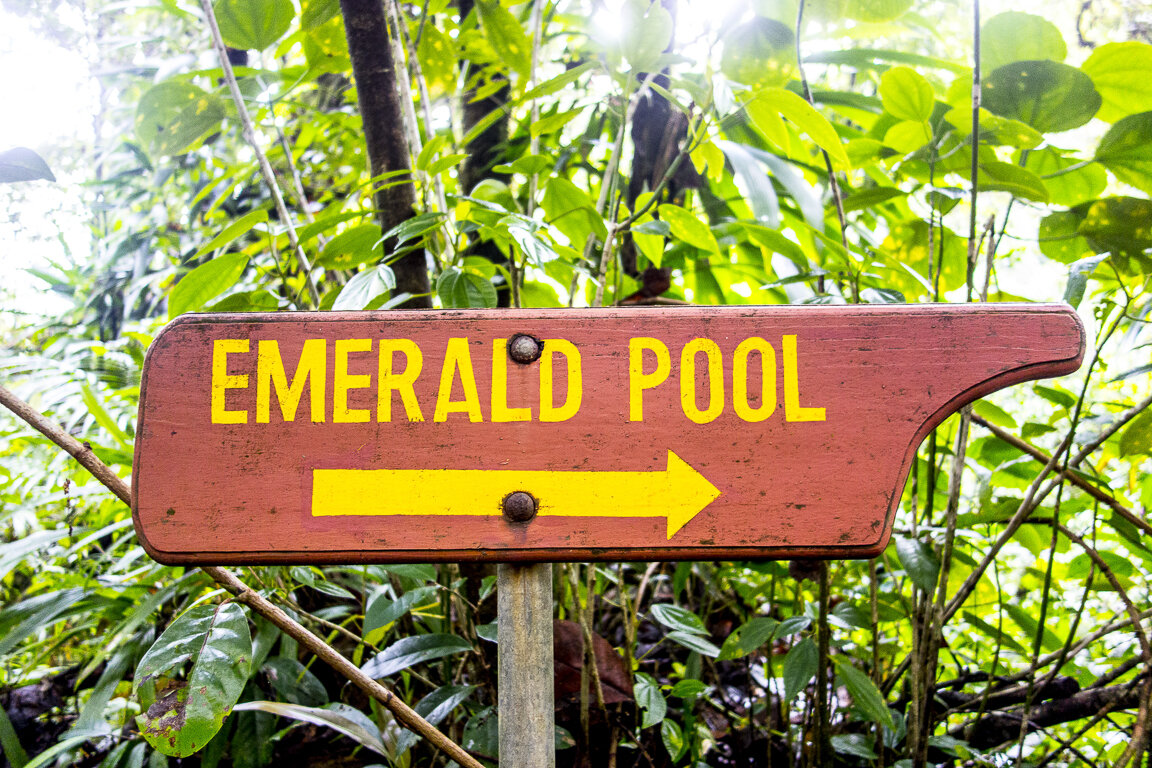

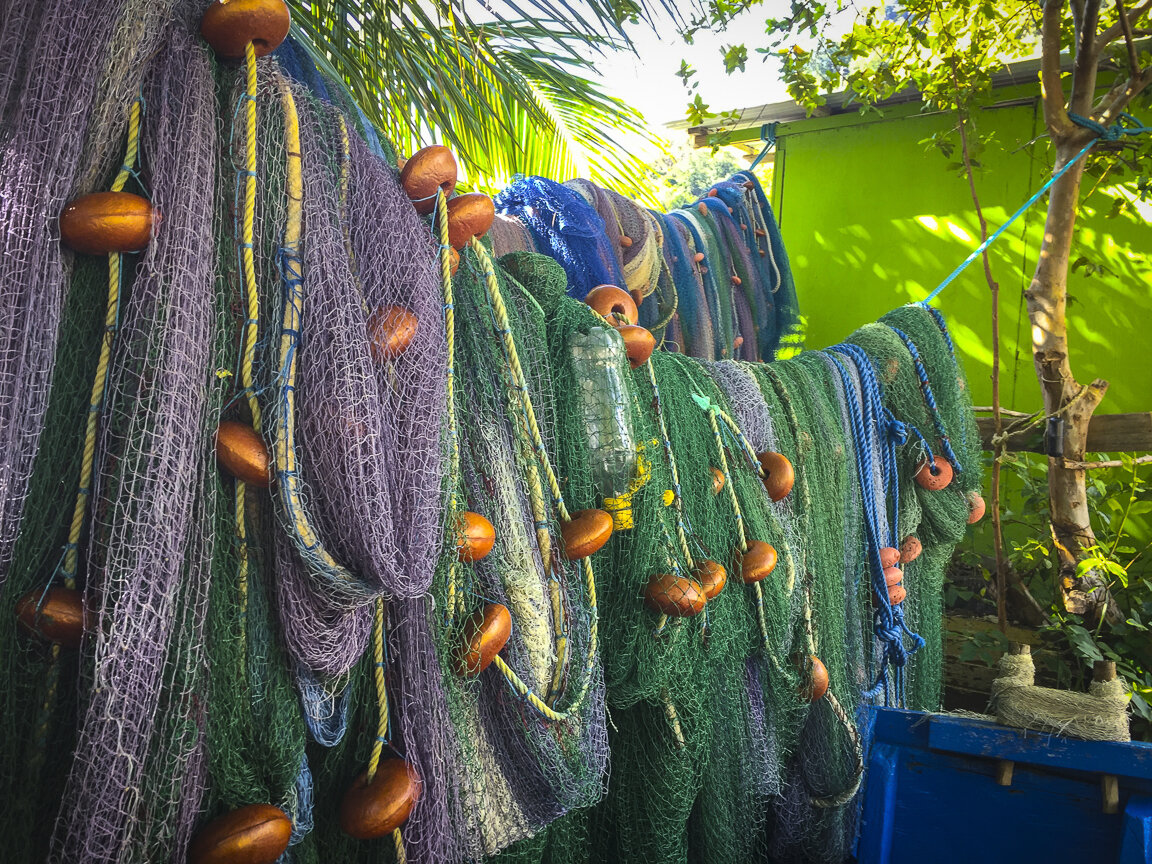

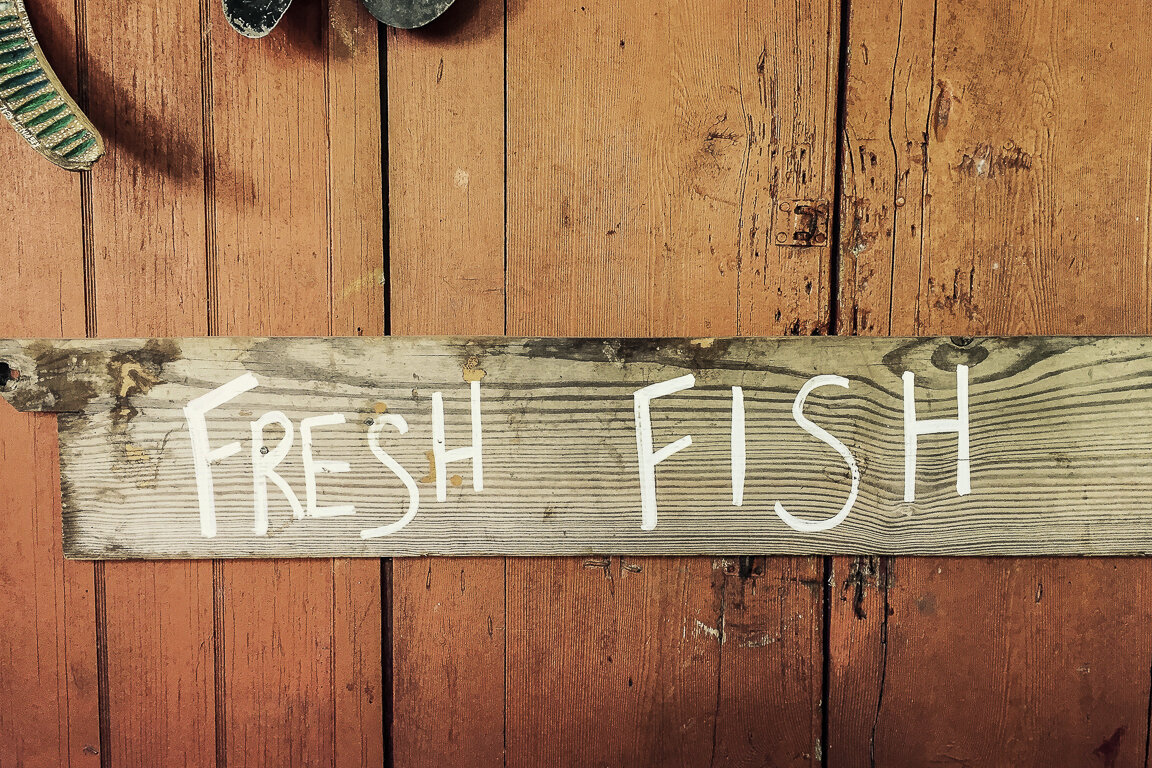
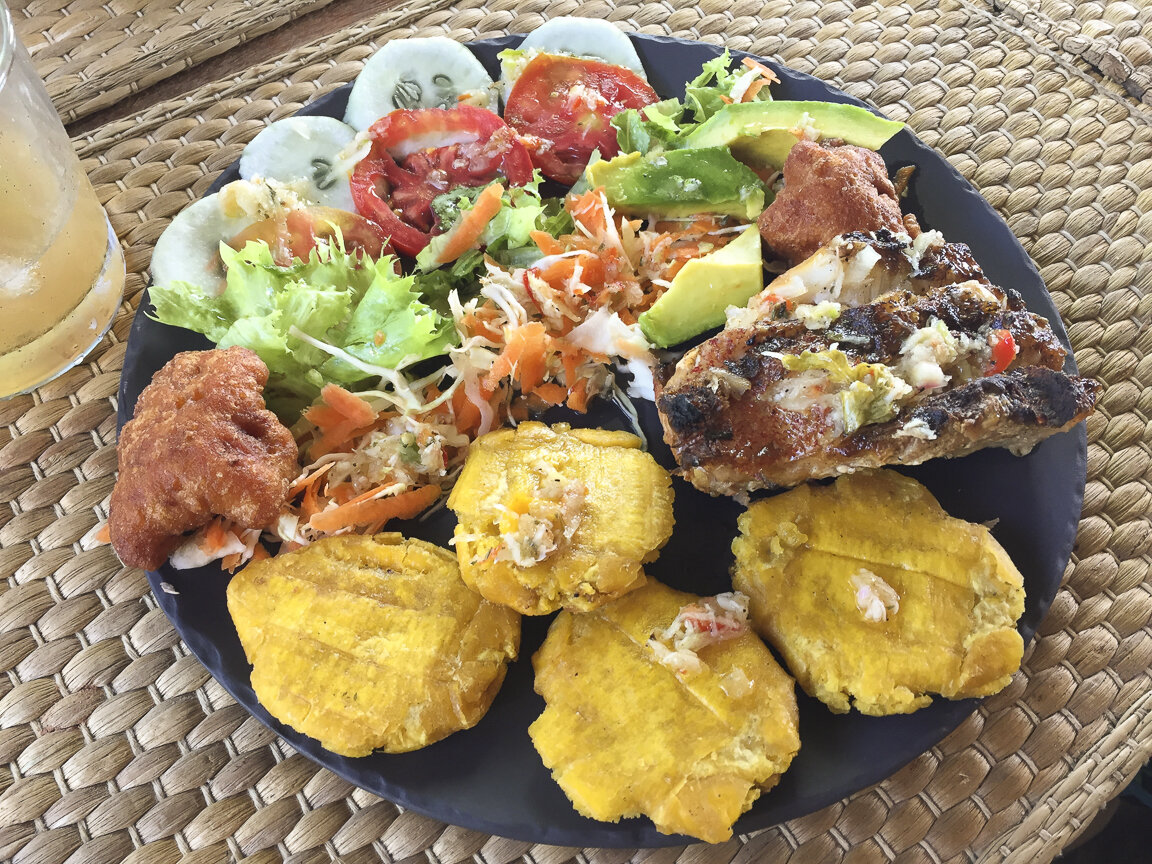
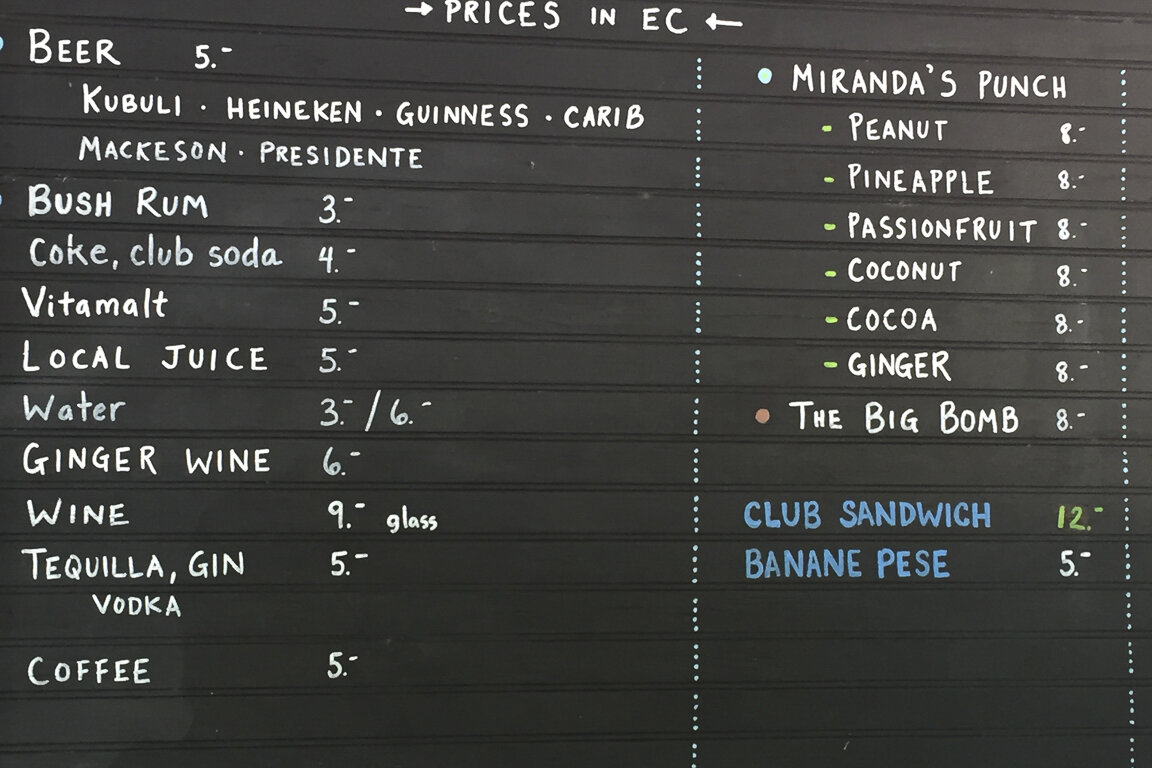

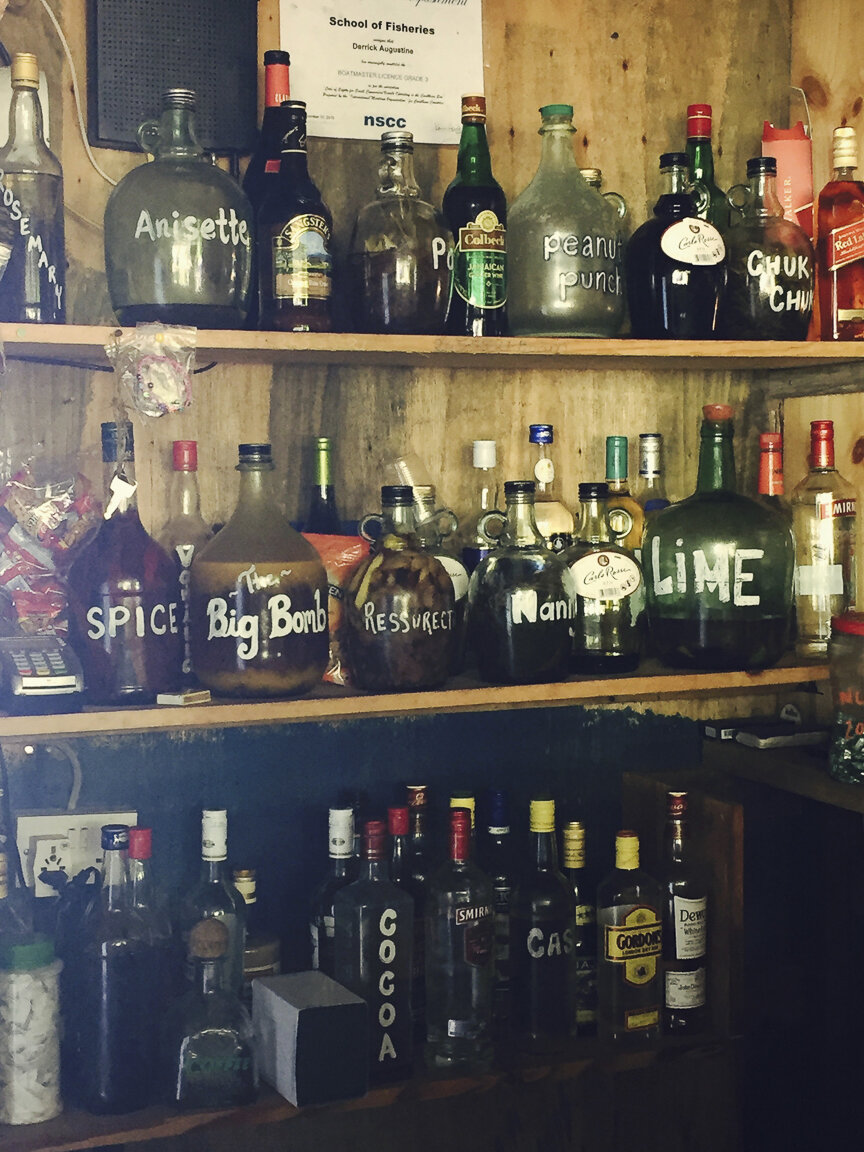






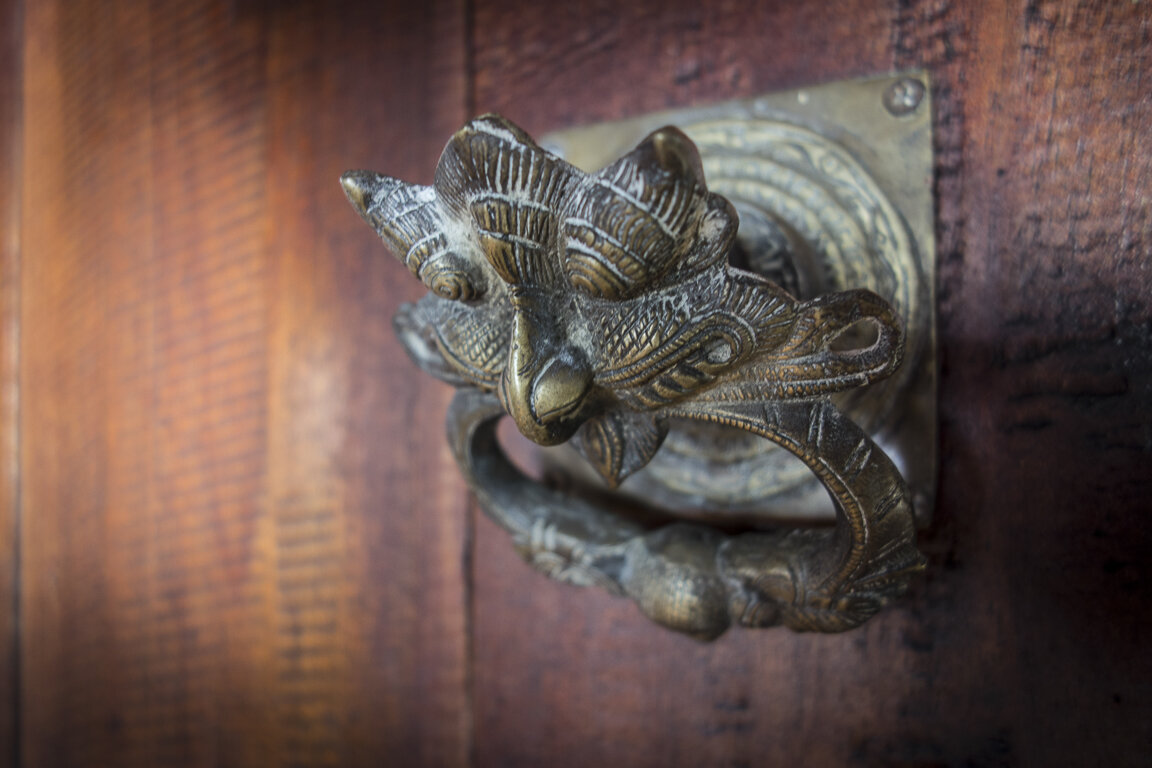
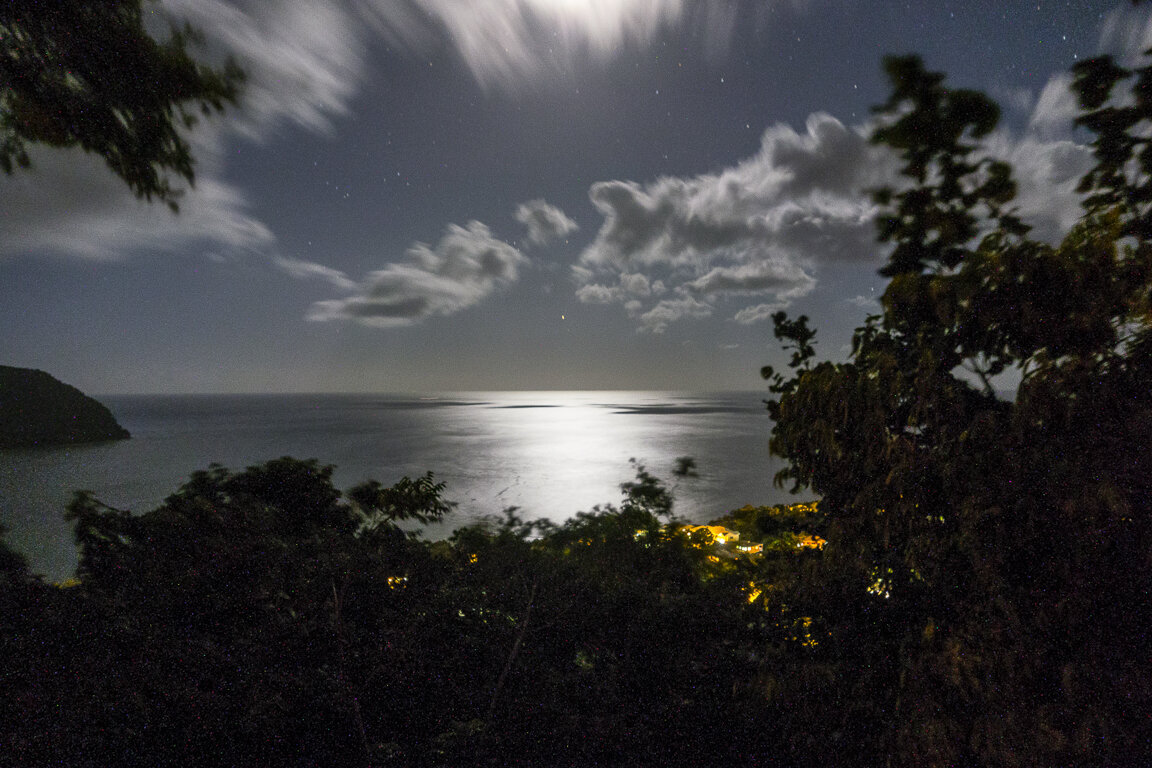
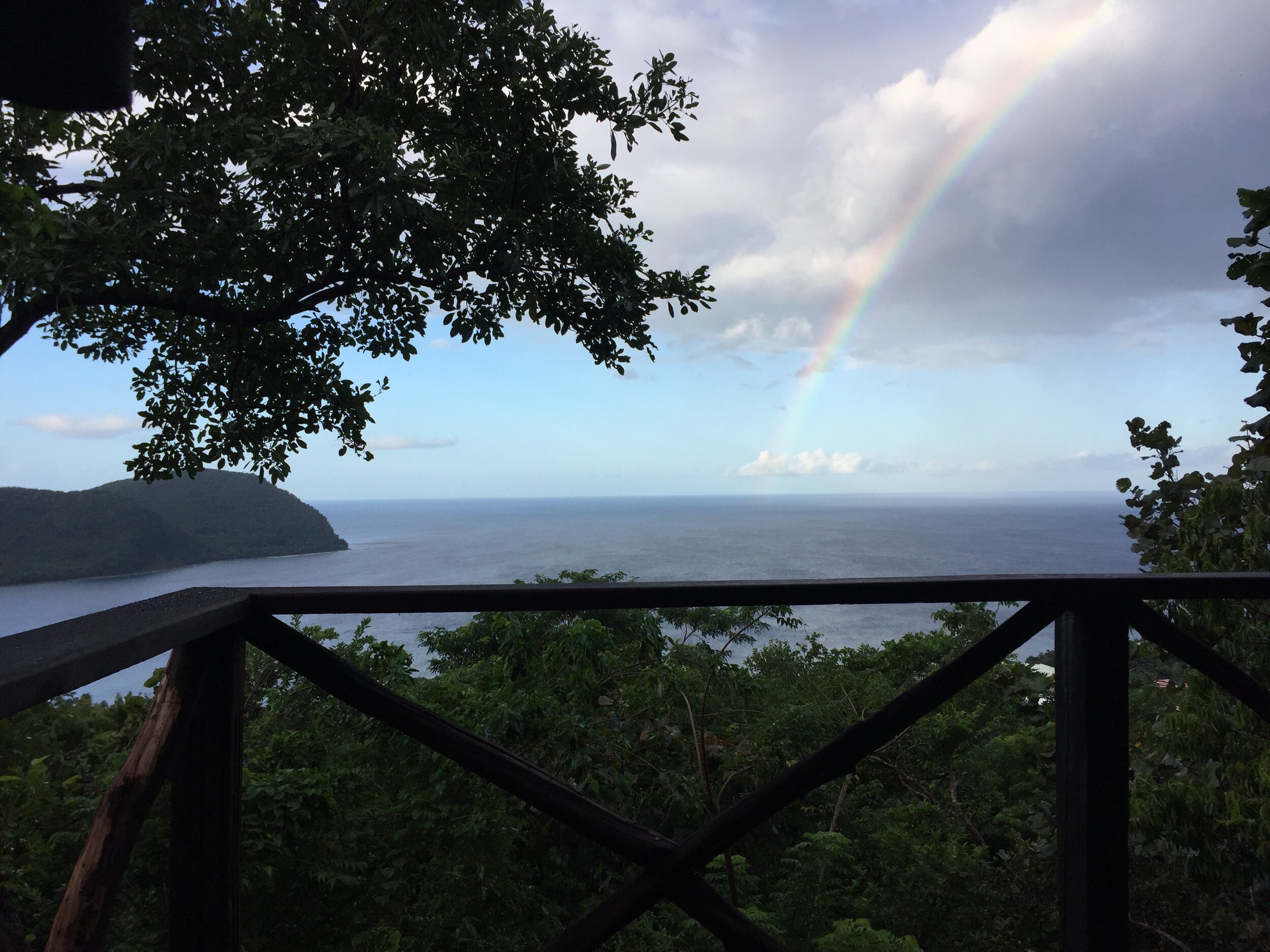
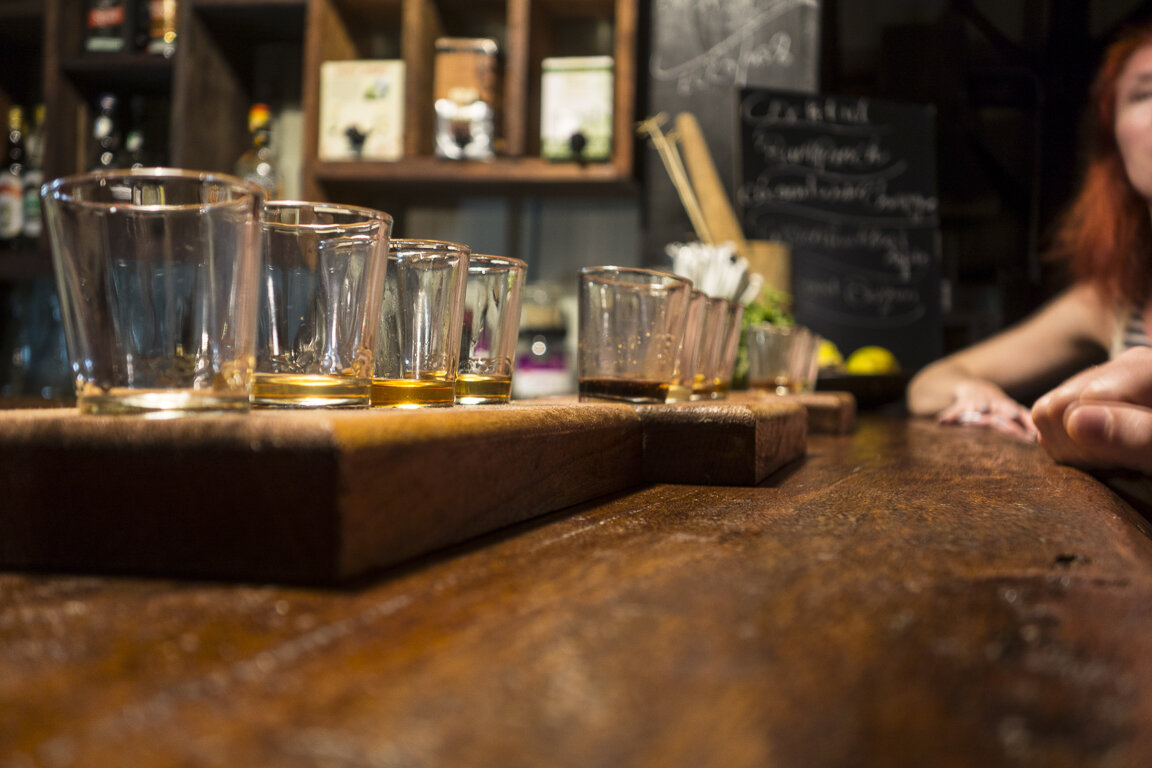

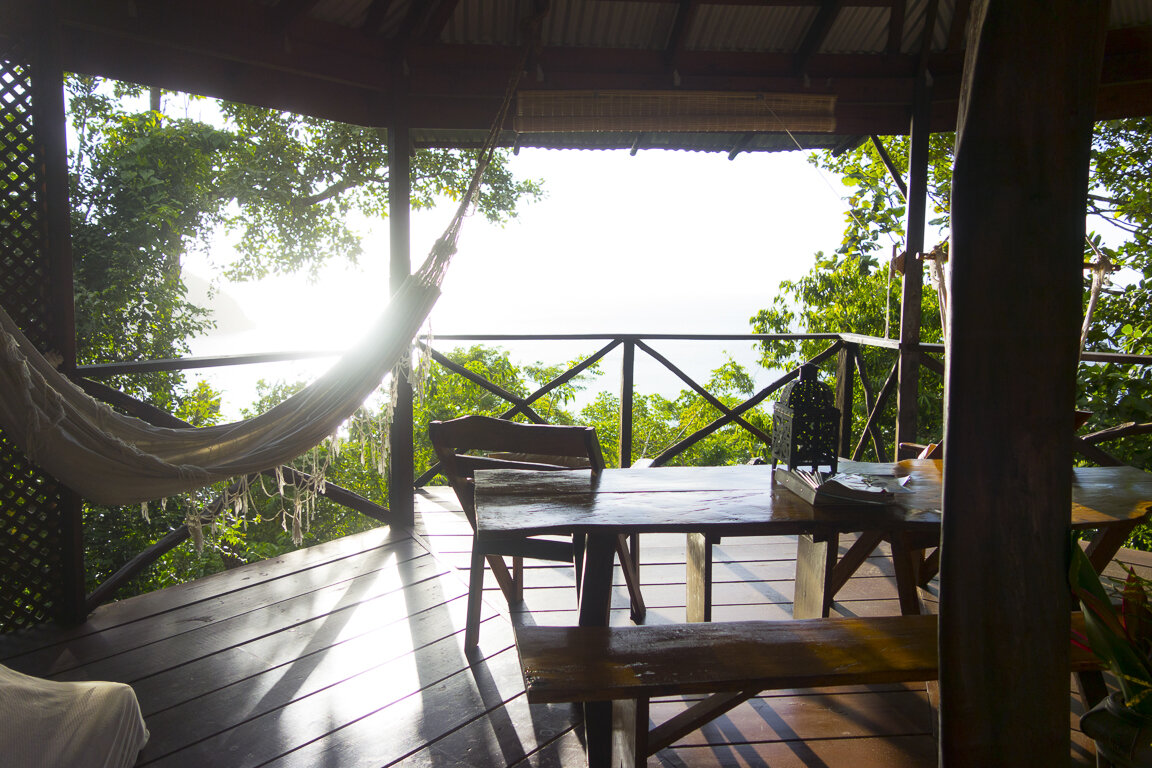
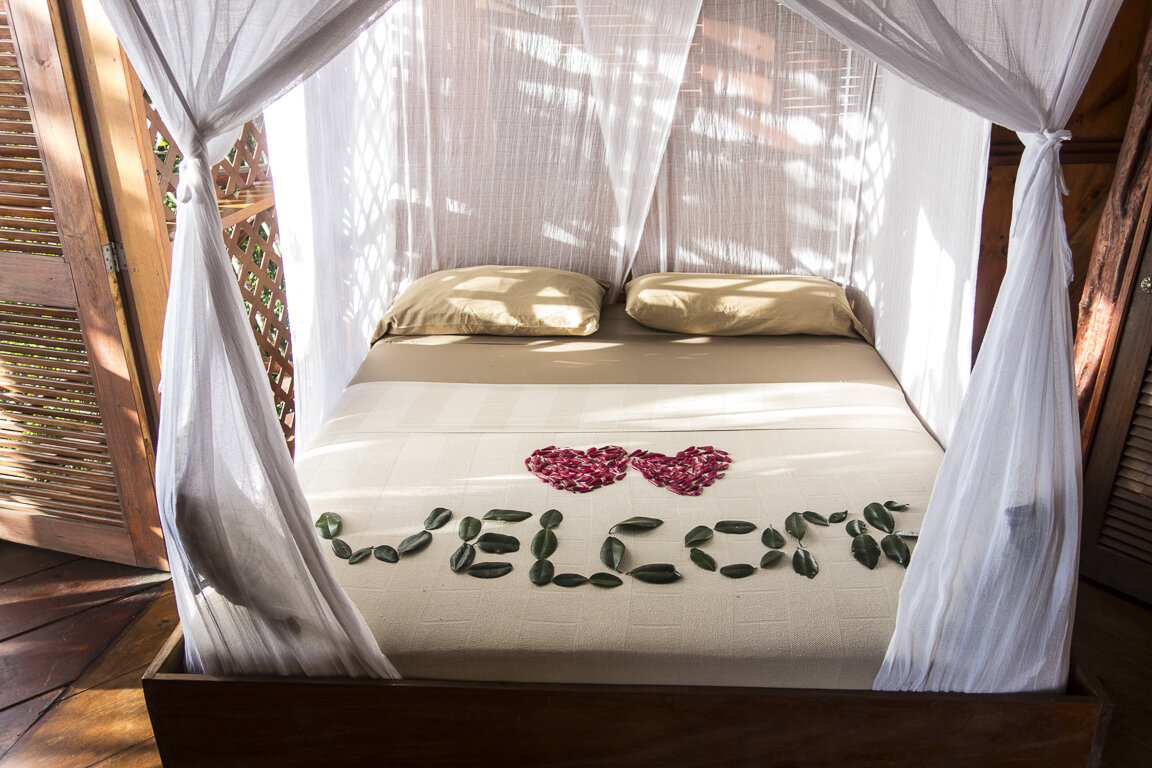
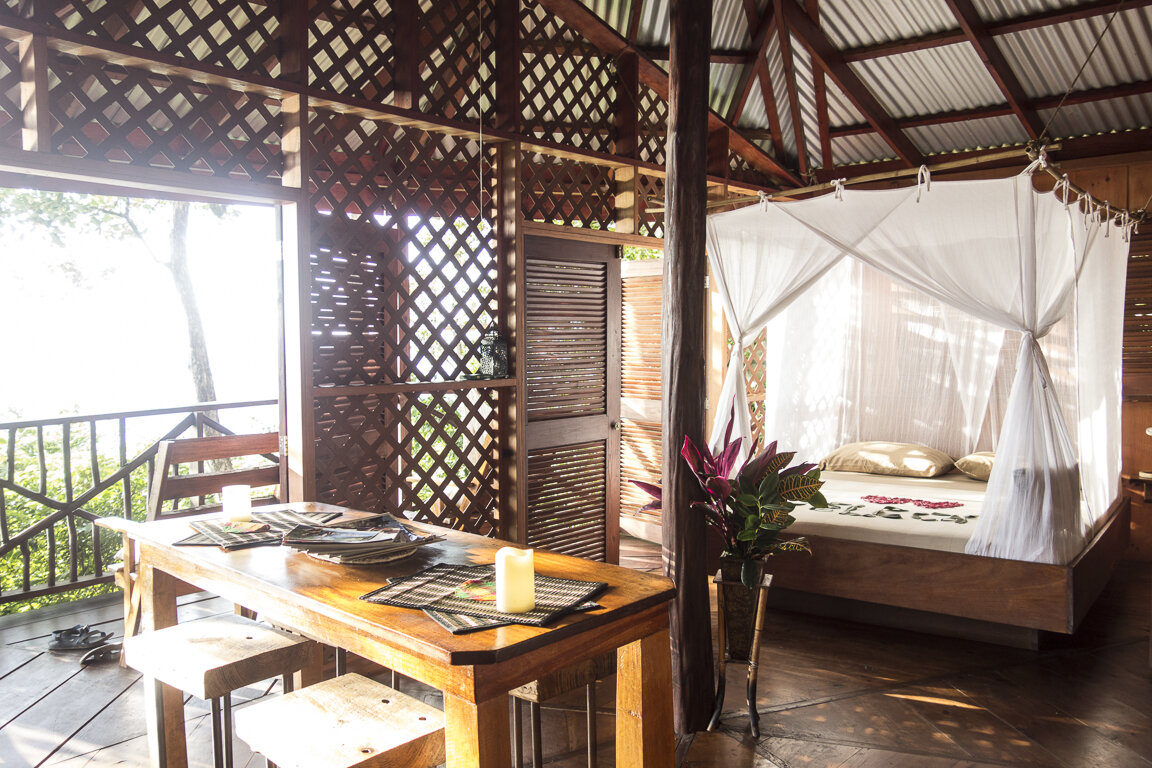
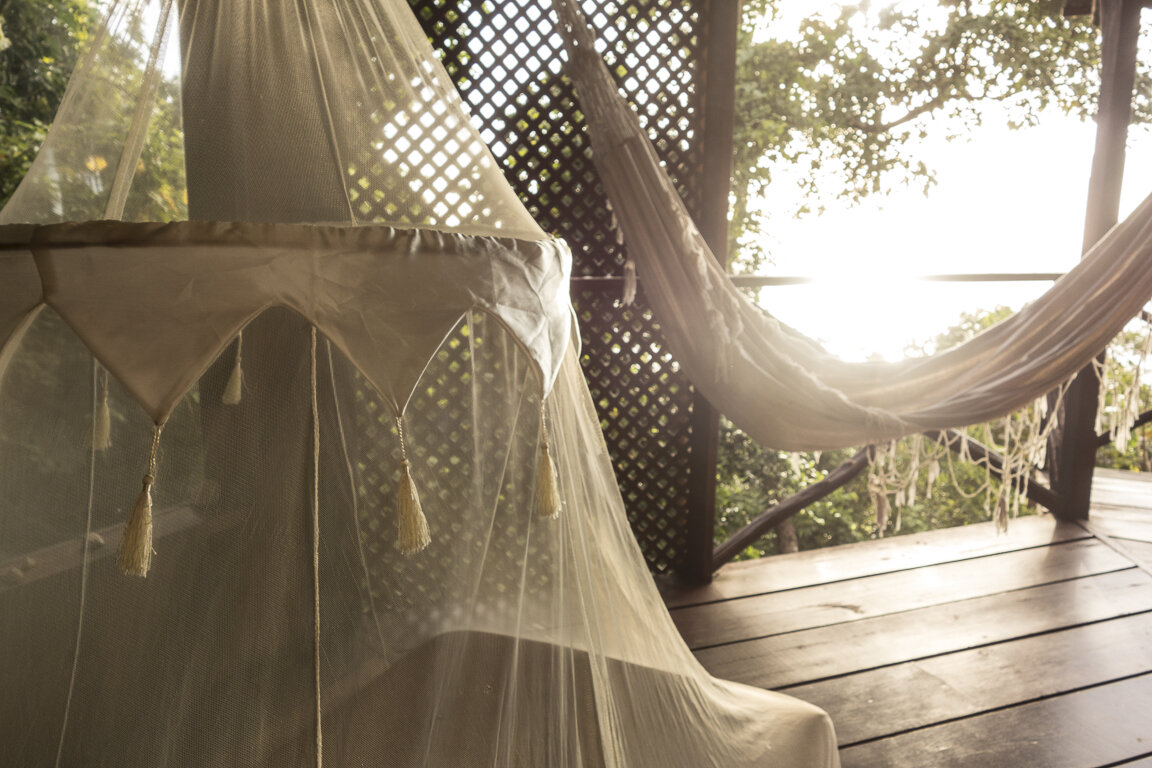
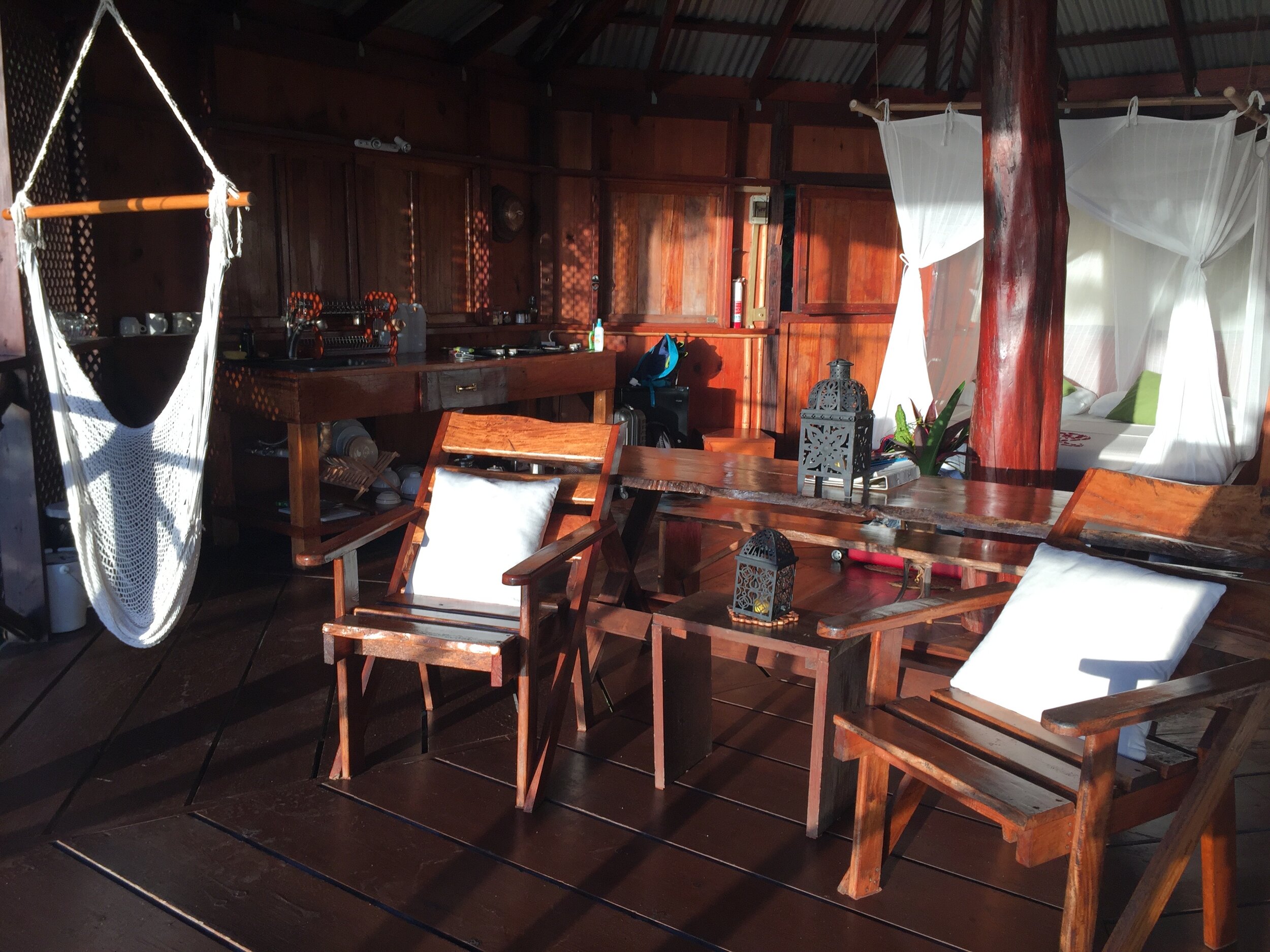
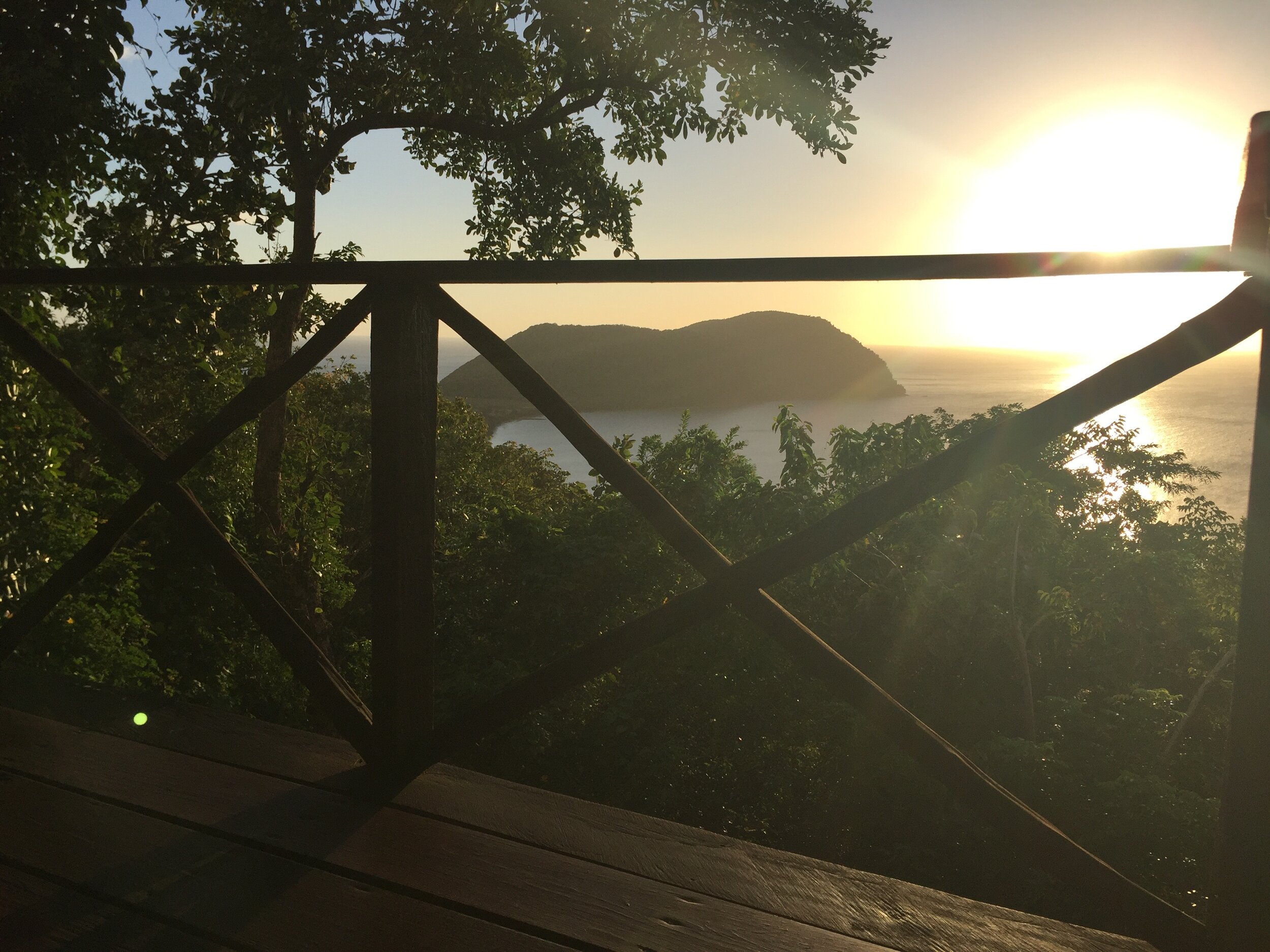

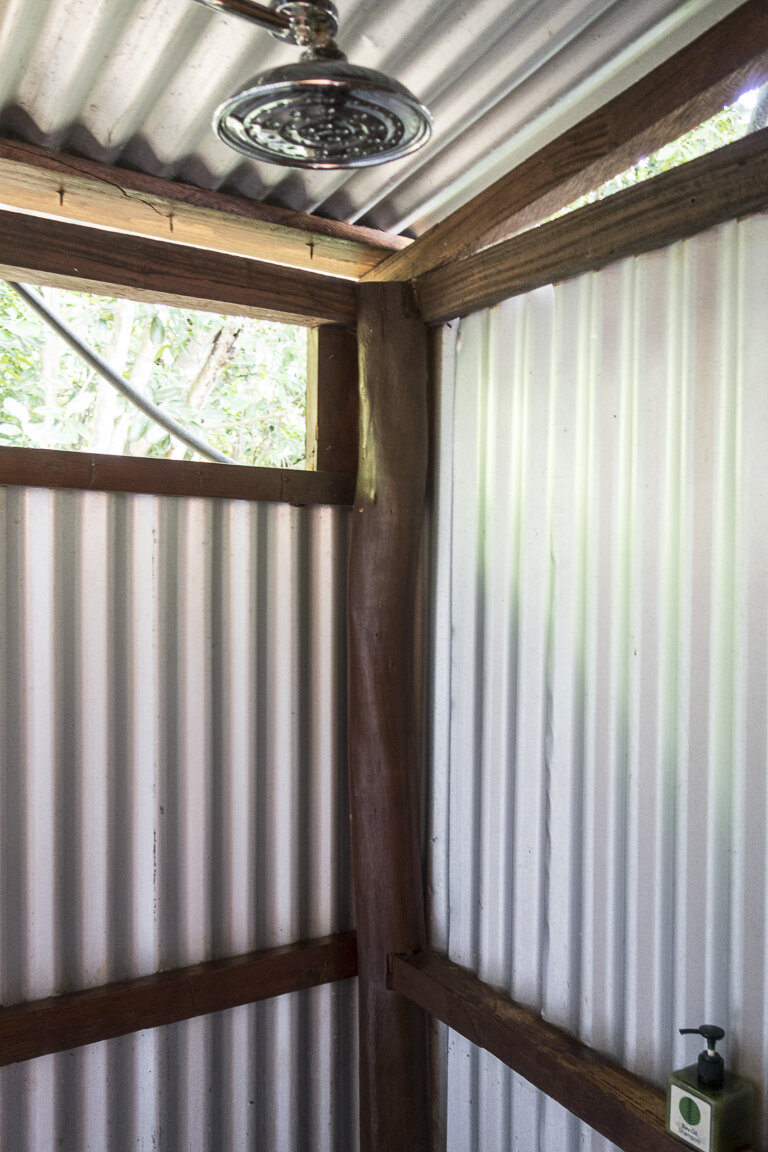
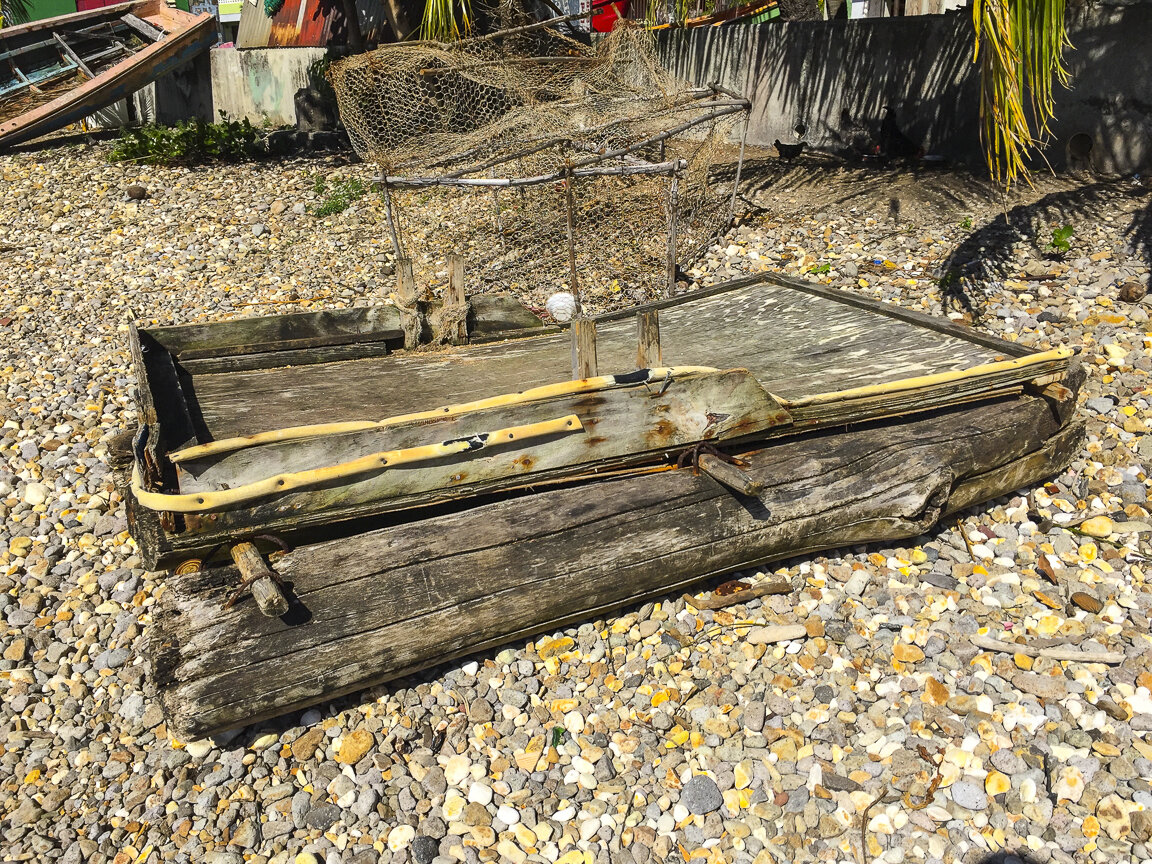
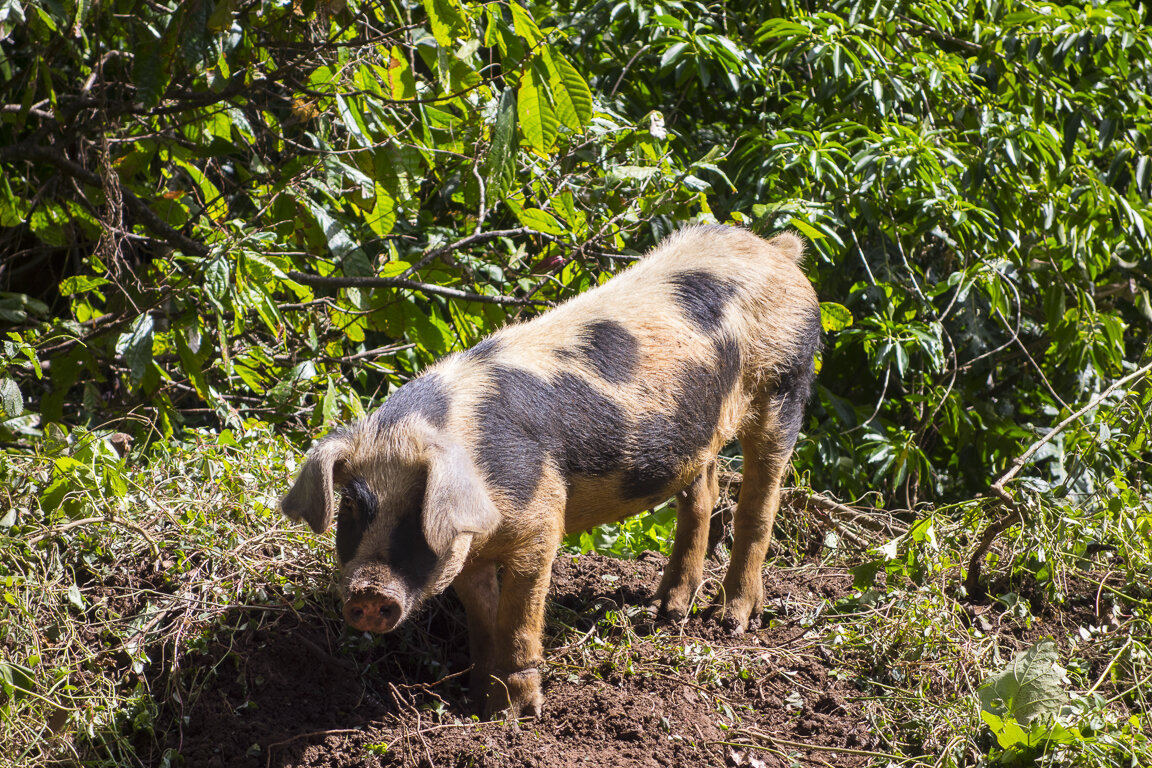

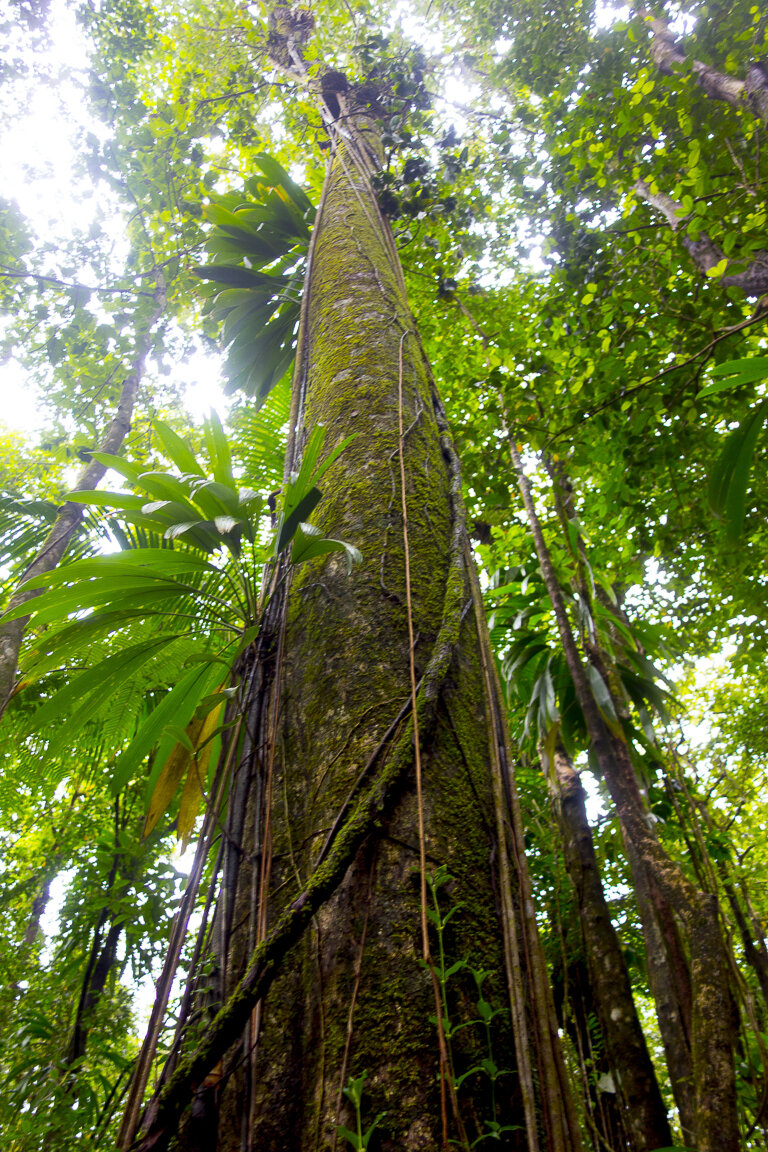
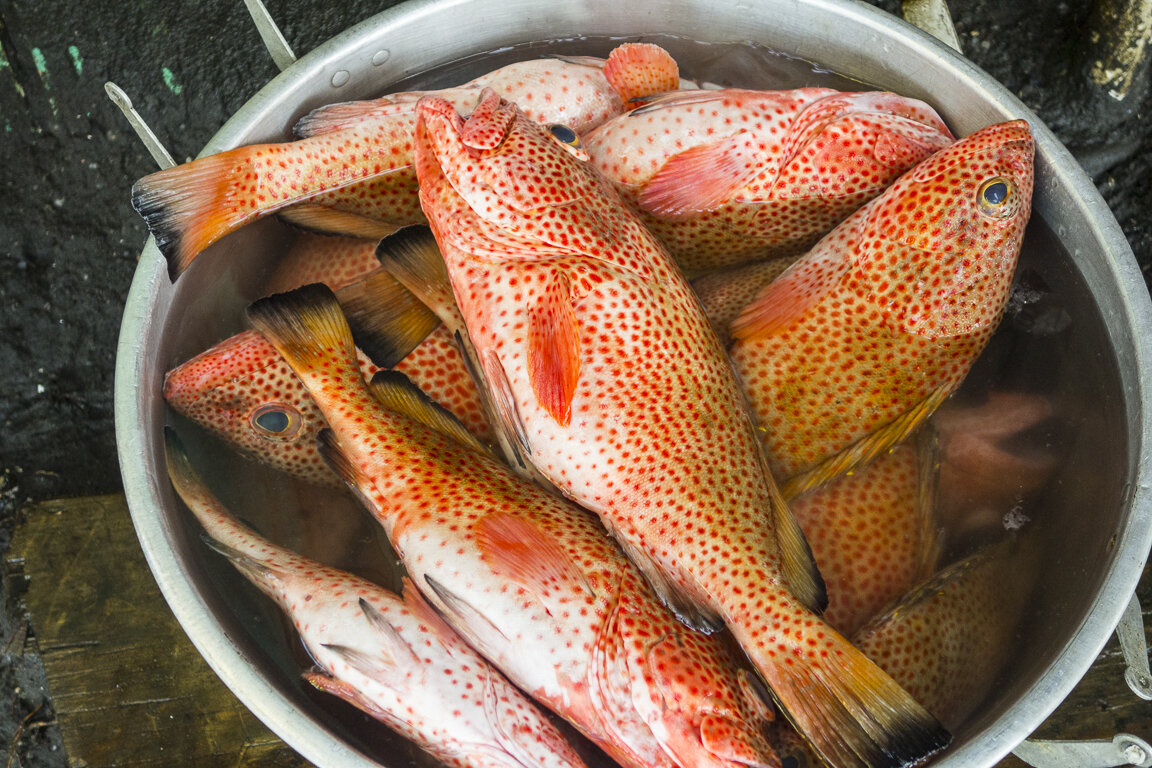

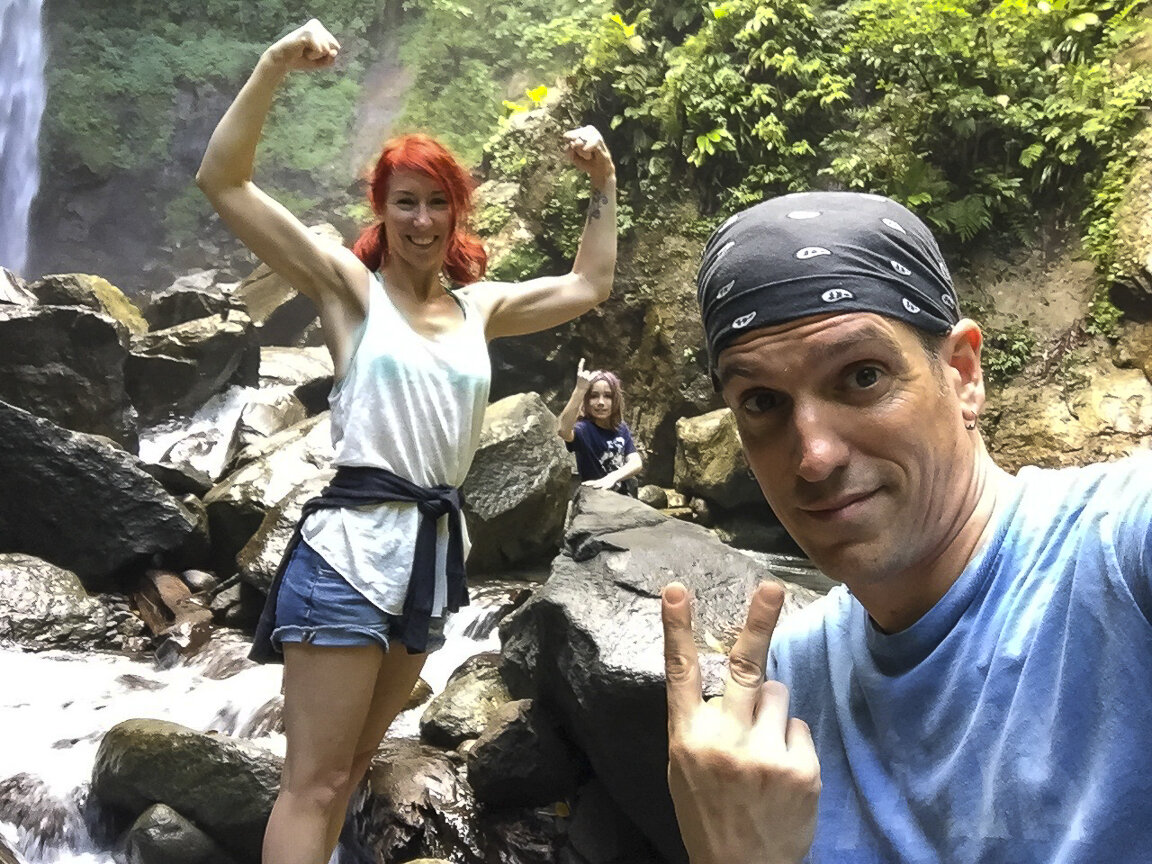


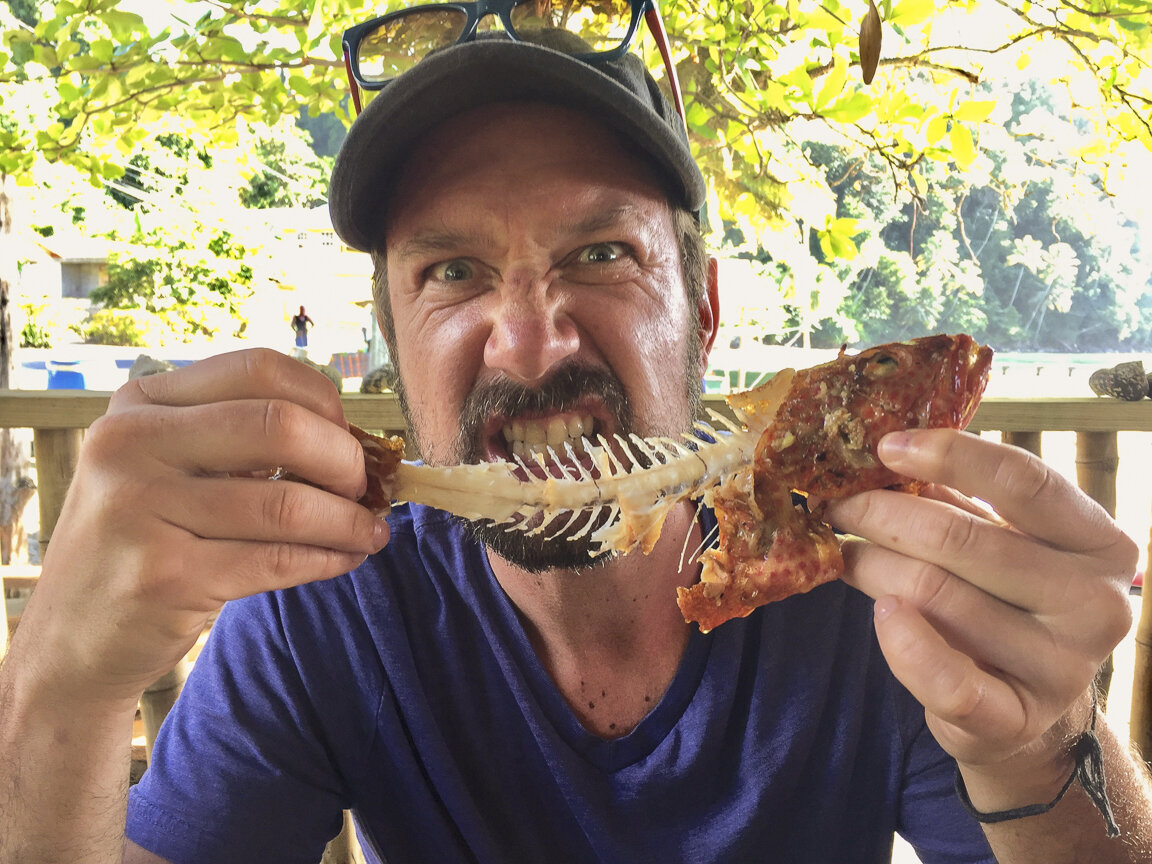
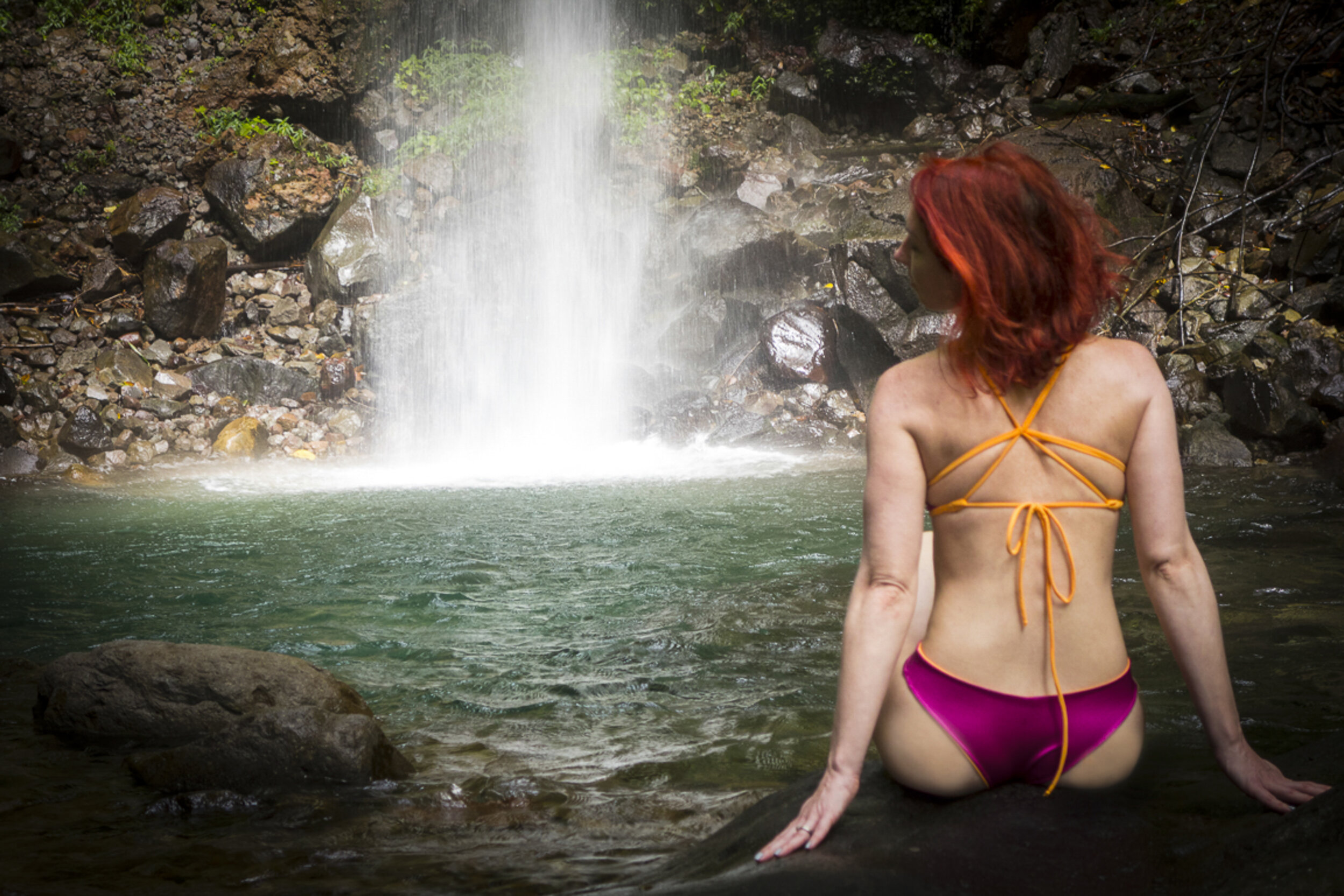

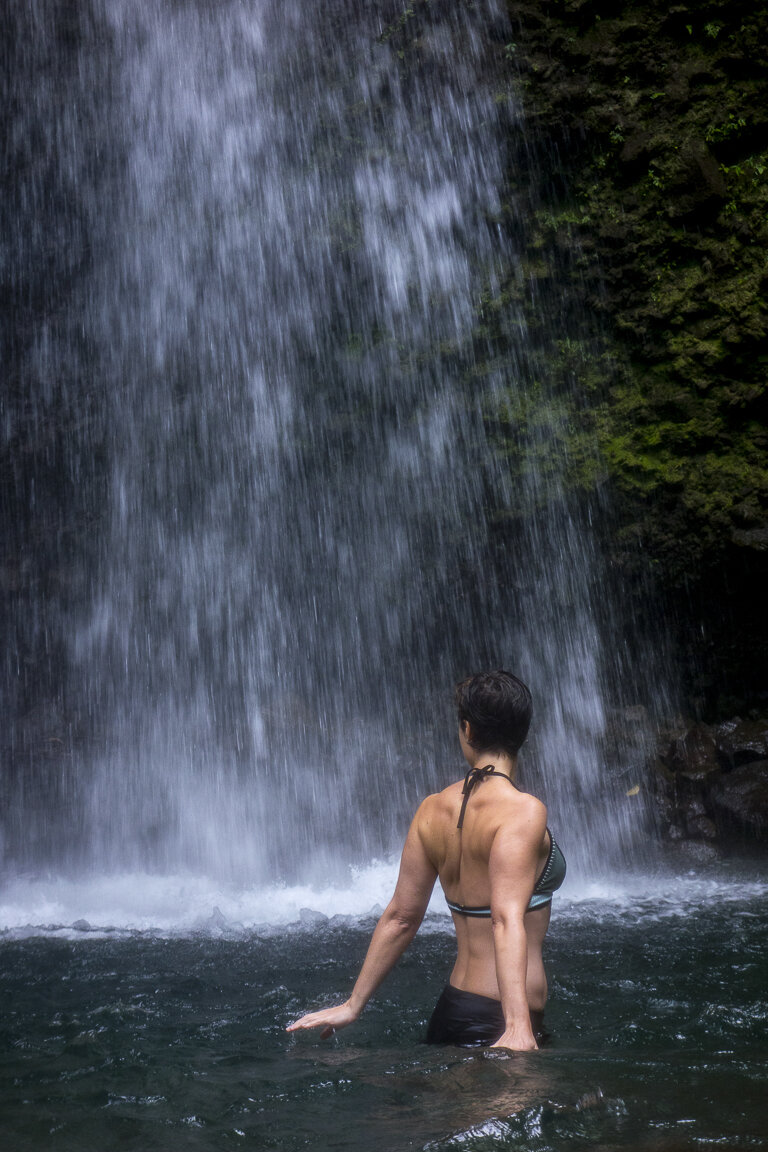
“Have you ever found yourself vacationing in a stunningly beautiful place overrun with sunburnt tourists and thought, ‘I wonder how spectacular this was before the whole world showed up?’ Well, Dominica is your answer. This is the most undeveloped island in the Caribbean, a 300-square-mile piece of lush tropical jungle where nature still reigns supreme.
Dominica’s flush with thunderous waterfalls, crystal-clear rivers, and mountains that shine 14 shades of green on a sunny day. The Atlantic crashes into boulders along black sand beaches and mist engulfs palm trees along the shore. The entire island smells like a spa, full of thick, steamy air scented with the sap from gum trees. It’s the kind of place that restores your faith in the power of nature.”
The first thing that needs to be said about Dominica (Doe-min-EEK-uh) is that it is NOT the Dominican Republic – different island with a completely different vibe. Dominica is not the island you visit if you’re looking to spend your days lounging on a white sand beach having tropical drinks delivered to you by an all-inclusive staff. Dominica is the island you visit for true adventure travel, which hasn’t been spoiled by hordes of people, yet (we did see construction for at least one large resort, which could be the unfortunate sign of times to come). While there is a cruise port that dumps a few thousand tourists into the area surrounding Roseau on port days, those folks tend to stick to the more easily accessible waterfalls and attractions, leaving the rest of the hundreds of gorges, waterfalls, rivers, volcanoes (there are 7) and coral reef practically untouched for the non-cruise crowd. I’ll be honest, Dominica’s probably not for everyone, but if you’re up for some adventure, it’s one of the most breathtakingly gorgeous places on Earth with some of the most genuinely friendly locals we’ve ever met. Oh, and we had rainbows every. single. day.
The original thing that put Dominica on our bucket list, over a decade ago, was its reputation as one of the better dive locations in the Caribbean. And in that respect, it did not disappoint. The reef is healthy and colorful with a nice range of diverse dive sites. But the thing that made us truly fall in love with the island, are the seemingly endless options of adventures to be had above sea level. We knew on day one into our twelve-day trip, that there was no way we were going to be able to explore even half of the volcanic peaks, gorges, boiling sulphur springs, sparkling waterfalls, rushing streams and rainforest canopies. You could spend a year here, choosing a different adventure every day, without hitting the same place twice.
THE DIGS
Cocoa Cottages Treehouse
Just getting to Cocoa Cottages was an adventure, as it was our first day of driving the crazy Dominica roads, and the road we were pretty sure we needed to take to get there, was blocked off with a wooden barricade. It turns out, there had been a mudslide the day before and a good portion of the road was pretty much gone. But as things go in Dominica, a local saw us standing there trying to figure out what to do, calmly told us about the mudslide (it’s a fairly common occurrence) and told us about an alternate route. Upon arrival, we were greeted by one of the owners, Iris, who took pity on us when we admitted we weren’t ready to take on the unfamiliar roads in the dark, and agreed to make us dinner even though we hadn’t made a reservation (Cocoa is a very small resort, so they typically only provide meals if it has been arranged in advance). We immediately knew we were in good hands.
We were a teeny bit nervous going into this situation, in that we knew we were renting an open air treehouse, in the rainforest, with six of us sharing one bathroom, with no walls. But the treehouse exceeded our expectations in every way. Magically, even though there are mosquito nets on the beds, we didn’t see a single one and ended up not even using the nets. We fell asleep each night and woke each morning to a symphony of jungle sounds – everyone agreeing it was the best sleep we’ve ever had. We actually recorded several minutes of the night sounds on John’s phone, and play it on a loop to fall asleep to every night since we’ve been home. The beds were all super comfy and we really couldn’t have been any happier with our Swiss Family Robinson-esque glamping experience.
The treehouse, in addition to the other cottages/rooms, are all decorated with an artist’s eye, utilizing local materials. The communal dining area is a lovely open air kitchen, and while the treehouse does have its own kitchen, we only ended up cooking one meal for ourselves, opting instead to enjoy the tasty breakfasts and dinners cooked by Iris and her crew. Breakfasts are $15/pp and the ginger coconut jam/spread is AMAZING. Dinners are $35/pp (Iris gave us a break on the kids, which was much appreciated) and were a delicious array of local organically grown veggies and fresh seafood or meat, plus dessert. All meals are served at a large round table, allowing for a nice bit of socializing with the other guests who quickly became friends.
Iris was a wealth of information for the best local hikes, dive shops, beaches and any other activities you could want in the area. Right next door to Cocoa Cottages is the base camp for Extreme Dominica, which is THE BEST canyoning experience on the island and not to be missed (see Things To Do section below).
Mango Island Lodges
For the second part of our stay, we wanted to be in the central part of the island with easy access to the beach (Mero beach is walkable), and Mango totally fit the bill. This part of the island is a bit more arid than jungle-like, so the salt water infinity pool, situated at the top of a hill overlooking the Caribbean sea, is a really nice perk. There are only 3-4 rooms, each designed in a cheerfully elegant modern decor utilizing local eco-conscious materials. All water is heated by solar panels. And included in each room is an older cell phone for guests to use, which really came in handy for making local calls and getting around. The French owners, Stéphane & Karine have spent years lovingly crafting the landscaping throughout the property and it shows.
The restaurant is creatively, yet tastefully, designed with three different themed sections, one of which includes swinging chairs, and all of which have breathtaking views of the Caribbean. Stéphane & Karine seem to do most of the cooking, with our favorites being the crepes for breakfast, the cumin & paprika encrusted tuna for dinner and the pineapple cake for dessert. The breakfast menu is set with 5-6 items, and the dinner menu changes based on the availability of local ingredients and the various catches of the day. You need to make your dinner selection by 2pm, choosing from a board posted with that day’s menu. John and Jocie, feeling daring, split a lion fish one night, which lead to some entertaining stories of Stéphane’s colorful diving run-ins with the poisonous fish.
Stéphane is an excellent resource for diving info and good hiking trails, and we really enjoyed our time at Mango with him, Karine, and their sweet daughter.
Manicou River
On the northwest coast of the island, Manicou River was a bit of a splurge (cottages are $220-$265/nt with a 3-night minimum), but for the last leg of our trip, we knew we wanted to treat ourselves. Like many Dominican destinations, arrival at Manicou is part of the adventure as you wind your way up the mountain to the steepest driveway you are ever likely to experience. You DEFINITELY need 4-wheel drive. But the unbelievable views from your cottage and the restaurant are the pot of gold at the end of the rainbow.
The laid back, friendly owners, Kate and Patrick, have done a wonderful job of designing the hand-built wooden cottages and restaurant. The entire property operates off the grid, using rainwater for plumbing and solar power. Each cottage is built into the hill in such a way that you have total privacy, while still having stunning open air views of Cabrits National Park and the Caribbean. The furniture is all handmade with local wood and each cottage has its own kitchen stocked with basic cooking essentials and a mini fridge. The bathrooms are supplied with delicious smelling homemade soaps and shampoo all made with local ingredients.
The restaurant includes a great little bar which has 29 varieties of Manicou’s homemade rums. We made it our mission to sample all 29, with the help of the extremely personable bartender, Junette. After an intense couple of nights of sampling (including color coded ranking brackets), the winners were: mangosteen, soursop, smokey cocoa, admirals plum, Caribbean gooseberry, bitter orange and star fruit.
Manicou River is about 10 min from Portsmouth, a charming port “city” that has several restaurants and a market or two. There is a small walkable beach (Tantane), although the hike back up the Manicou driveway/road is a bit of a beast. We really enjoyed Toucari beach, just a bit further up the road, and especially lunch and drinks at Keepin’ It Real.
THINGS TO DO & EAT
Emerald Pool Falls
This was the first waterfall we visited on the day we arrived, so at the time, it seemed impressive. And not that it isn’t lovely, but we quickly realized that it’s one of the more crowded/touristed falls because it’s one of the most easily accessible in terms of the hike in. There’s a well cleared path through the woods and some steps, making for a super easy & quick visit. There’s a small entrance fee.
Hike to Boeri Lake
The hike up to Boeri Lake is like a trek through an enchanted forest culminating in a misty mountain lake in the clouds. Mossy rocks, fiddle ferns dripping with dew, dangling vines – it seemed completely believable that we might need to make way for a fairy or tree sprite. The hike itself was moderately challenging for us and took 2 hours to reach the lake at 2900ft (the sign at the trailhead estimated 45min up to the lake), and 1 hour to hike back down. There are rather steep inclines & declines at parts, and the rocks can be quite slippery. There’s a hot spring at the end of the parking lot (marked by a bamboo shoot) which was great for a warm-up after our chilly swim in the lake, but be warned, it does smell like iron and left an orange sediment on the kids’ swimsuits.
Dive/snorkel with Champagne Reef dive shop
Champagne Reef: Underwater geothermal springs vent gasses in the form of thousands of warm bubbles giving the feeling of swimming through a giant glass of Champagne. Sightings of sponges, lobster, parrot fish and a resident population of Hawksbill turtles.
Scotts Head: A vast submerged volcanic crater, it has several amazing dive sites; dramatic drop-offs and walls, huge pinnacles rising from the sea bed, active underwater fumaroles, expansive coral reefs, all full of life.
Bakes
Bakes are a local street food that’s bit like a biscuit, but you can get them stuffed with all sorts of deliciousness (cheese, fish, meat). As a local fave, they are frequently sold out before noon, so grab one early. Our favorites were the cheese bakes from an oceanside shack in Soufriere. Amazing. John also had a shark bake that he really enjoyed, from Smithy’s in Portsmouth.
Sulphur Springs in Soufriere at the Bubble Beach Spa
In front of St. Mark’s church, there’s a little stretch of beach where they’ve built a small wall of rocks in the shallow surf, creating a natural hot jacuzzi. Just be sure to enter the water quickly, because it’s extremely hot (and will burn your feet) at the most shallow part. It’s free, but totally worth throwing a few dollars in the donation box to support the local man, Dale, who keeps the area maintained and clear of beach debris. Dale also runs a small snack bar with amazing homemade coconut, lime or peanut rum for $5EC (about $2US). It’s the perfect way to end a day of diving.
Canyoning Titou Gorge with Extreme Dominica
It’s hard to even put into words how much fun this experience was, but we happened to do it on New Year’s Eve and everyone in our group (there were about 10 of us) unanimously agreed that it was by far the best spent NYE of our lives. You rappel down a series of boulders (ranging from about 20-60ft in height), following the path of a waterfall, which creates pools that you swim through to get to the next rappelling section. Total adrenaline rush. The water is chilly, but you are wearing a full wetsuit, which helps some. Extreme Dominica is a top notch operation. The guides (Nahjie, Akeel & Barani) were fantastic – extremely personable and fun, while still super safety-conscious. There’s a brief training session at their canyoning school prior to departing for the Gorge, where you get suited up and practice on a wall, so even if you’ve never rappelled before you can do this. I would recommend being relatively fit for this adventure though – it’s a workout (we all passed out before midnight on NYE). That said, Foster and Jade, both 10, did great physically and were probably more fearless than the adults.
Mero beach & Romance Cafe
Mero beach is one of the few sandy beaches with a quaint strip of restaurants/beach shacks. You can rent chairs & umbrellas and there are restrooms for changing and showers. There were a couple hours where there was a bit of a cruise ship crowd, but once they left, we practically had the place to ourselves. We had a tasty dinner on New Year’s Eve at Romance Cafe and really enjoyed talking with the chef (she seems to know everyone on the island and has great stories).
Hike Sultan Falls w/lunch at Riverstone Bar ’n’ Grill
One of the easier set of falls to hike to (it’s only about a 20min hike from the road), but not crowded at all. There was only one other family there while we were. There are two falls, one that’s taller and more narrow, and one that’s lower but wider. After the falls we had some yummy fish and chicken plates at the scenic & very casual Riverstone Bar ’n’ Grill.
Hike to Sari Sari Falls in the South East (near La Plaine) w/lunch at Riverside Cafe (within Citrus Creek Plantation)
Sari Sari was rated as a moderate level hike in our guidebook, but after storm damage, it’s become more challenging and definitely one we would recommend hiring a local guide for. We were approached by at least two locals as we got close to the site, so you don’t have to look hard for a guide. It’s not very well marked and there’s some pretty precarious terrain (slippery boulders, mudslides that you get down via rope, crossing streams, etc). We hired a local, named Frankie, as our guide, and while we initially negotiated him down to $30US from his asking price of $50 (for the six of us combined), we did end up paying him $40 in the end because he definitely earned it. And he did the entire thing barefoot (stashing his sneakers in a rock at the beginning of the trail).
After the vigorous hike, we had an excellent lunch at Riverside Cafe. Great food, excellent drinks, really good service, on a beautiful riverside wooded veranda.
Toucari Beach with lunch at Lunch at Keepin’ It Real
In the NW part of the island, not far from Portsmouth is a little sandy beach cove, lined with palms. We had an amazing lunch at Keeping It Real, a beach shack where we watched the chef, a local named Derrick, bring in the catch of the day from the boat, and then prep and grill it. It’s not a fast process – it was probably about 2 hrs from the time we placed our order until we were eating our snapper platters, but man, was it worth the wait. And sipping on Derrick’s homemade lime rum punch, served out of a container that looked like it should be something straight out of the Pirates of the Caribbean set (which was actually filmed in Dominica), made the two hour wait go by in the blink of an eye.
GETTING THERE & AROUND
Part of what has kept Dominica one of the best kept secrets of the Caribbean, is that there aren’t any direct flights from the US, and therefore it’s not the easiest place to get to (and definitely not the easiest place to land – more on that later). You have to take a small charter flight, most connecting from either San Juan, PR or St. Maarten. Three of the six of us arrived from San Juan on schedule, with no problem. The other half of us were scheduled to arrive an hour later, coming from St. Maarten. But in that hour, the wind had picked up enough that just before we were about to touch ground (landing gear down, friends waving to us from the end of the runway), the pilot had to pull up and reroute us to the next island over (Guadeloupe, with a larger, less perilous runway), where we ended up having to spend the night. In our case, the airline, Windward Island Airways/Air Antilles (https://www.fly-winair.sx), put us up in a hotel for the night, free of charge. We heard that’s not always the case depending on which airline you fly, and apparently this landing issue is not an uncommon occurrence due to the small, mountain-rimmed runway.
Dominica is only 26 miles from tip to tip, but you will definitely need to rent a car to get around. And definitely 4-wheel drive. Driving is, without a doubt, part of the adventure, and not for the faint of heart. Dominica used to be a British colony, so driving is on the left. That said, most roads were so narrow and winding, that there isn’t so much a right and left as a let’s-take-turns-sharing-the-middle situation. Dominica is very mountainous, and the switchbacks are so sharp and narrow that everyone honks when going around a curve so oncoming cars know to pull over to let you pass, one at a time. But even pulling over can be tricky, because it’s pretty common to have a cliff drop-off on one side of the road with a 2-3 ft. deep ditch on the opposite side, to allow for water runoff. Dominica was hit hard by Tropical Storm Erika in 2015, so along with lots of upside down abandoned cars on the side of the roads, they are still trying to repair the damage from mudslides and flooding, leaving several roads in poor condition or closed all together.
THINGS TO KNOW
Many of the hiking trails to the waterfalls and lakes were damaged during Tropical Storm Erika, so when they suggest hiring a local guide, they are not trying to just make a buck off of you, it’s a genuine safety issue. Ask a local if the trail is safe and well marked (many aren’t marked at all) before proceeding on your own, they will be honest with you, and if they recommend a guide, hire a guide.
I would recommend having a decent level of fitness to be able to really take advantage of Dominica’s offerings. We found that several hikes that were marked as “easy” in our guidebook, were actually moderate-to-hard for us, and often took double the allotted time. Granted, we had two 10-year olds with us, and the guidebooks were written before the storm damage, but we’re talking about moss-covered slippery boulders that definitely involved having to use your hands.
Bring good sturdy hiking sandals that can get wet (Merrell, Teva, Chaco, Keen, etc). A closed toe is a good idea, in general, and a requirement if doing the canyoning. Also bring a rain poncho. We had some rain just about every day. Or as the locals say, always wear a bathing suit.
Mosquitos/biting bugs were not an issue in the rainforest areas while were there (Dec-Jan), but we did experience them in the drier areas (around Mero). It’s good to have bug spray, in case.
We had no issues with the drinking water. There are waterfalls and natural springs EVERYWHERE so it’s about as fresh as you can get.
Before you get on the road, you will need to obtain a driver’s license which cost $30 (US$12). This can be done at the Dominica airport. You must be between 25 and 65 years old, with two years’ driving experience to qualify for a driver’s permit.
English is the primary language. Currency is Eastern Caribbean (EC) but they take $US everywhere.
